
“All dairy, all the time”™


“All dairy, all the time”™

DANIELLE NAUMAN/DAIRY STAR
Wisconsin Secretary of Agriculture
Randy Romanski addresses the crowd March 26 during the Wisconsin Farm Bureau Federa on’s Ag Day at the Capitol in Madison, Wisconsin. Romanski shared agricultural highlights of Democra c Gov. Tony Evers’ budget proposal.
Farmers, legislators discuss industry needs, concerns
By Danielle Nauman danielle.n@dairystar.com
MADISON, Wis. — Over 400 agricultural enthusiasts convened on Wisconsin’s capitol city to learn more about legislative issues of impact, and to take their concerns and ideas to their legislators at the Wisconsin Farm Bureau Federation’s Ag Day at the Capitol March 26.
“Ag is a priority, (legislators) need to hear what you do, how you do it and what’s important to you,” said Wisconsin Secretary of Agriculture, Trade and Consumer Protection Randy Romanski. “Wisconsin agriculture is an important part of our economy. It’s a $116.3 billion industry and employs nearly 10% of our citizenship — that demographic shows us all that ag is a part of our past, present and future.”
Romanski shared agricultural priorities put forth by Democratic Gov. Tony Evers for the next biennial budget. He said many are building on programs with a history of success.
“Many of the governor’s priorities are going to look really familiar,” Romanski said. “These are the same things the governor and legislature have worked together on in recent budgets, building on successful programs.”
Hilby
By Michelle Stangler Staff Writer
HAZEL GREEN, Wis. — In January, Nick Hilby lost his business partner and lifelong friend, Brandon Martin, to brain cancer. It was Martin who had given Hilby the opportunity to farm.
“Brandon and his dad were always open to trying to help anybody get some sort of start,” Hilby said.
Hilby always knew he wanted to farm, but without a family operation to take over, it did not seem like a real possibility. That changed when he met Martin. Meeting while helping out at Hilby’s uncle’s farm, the two boys
Turn to HILBY | Page 6

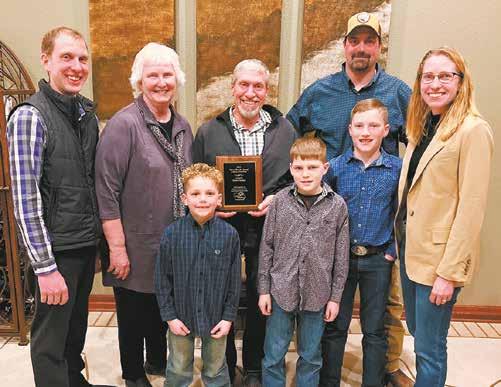
By Dan Wacker dan.w@dairystar.com
LUANA, Iowa — Being in charge of hosting the Iowa Holstein Association’s annual show means there must be trust involved with those you are working with. What show host Trent Henkes did not know was that the rest of the executive committee, and even his kids, were keeping a secret from him. During the awards ceremony, it was revealed that Henkes was winner of the 2025 Iowa Holstein Association Master Breeder award.
“It’s truly an honor to receive,” Henkes said. “Our family is good
www.dairystar.com
ISSN Print: 2834-619X • Online: 2834-6203 522 Sinclair Lewis Ave. Sauk Centre, MN 56378
Phone: 320-352-6303 Fax: 320-352-5647
Published by Star Publications LLC
General Manager/Editor
Mark Klaphake - mark.k@dairystar.com
320-352-6303 (ofce) 320-248-3196 (cell) 320-352-0062 (home) Ad Composition - 320-352-6303
Production Manager - Nancy Powell nancy.p@dairystar.com
Assistant Production Manager
Annika Gunderson • annika@star-pub.com
Karen Knoblach • karen.k@star-pub.com
Editorial Staff
Stacey Smart - Assistant Editor 262-442-6666 • stacey.s@dairystar.com
Danielle Nauman - Staff Writer 608-487-1101 • danielle.n@dairystar.com
Dan Wacker - Staff Writer 608-487-3858 • dan.w@dairystar.com
Tiffany Klaphake - Staff Writer 320-352-6303 • tiffany.k@dairystar.com
Amy Kyllo - Staff Writer amy.k@star-pub.com
Sarah Middendorf - Staff Writer sarah.m@star-pub.com
Advertising Sales
Main Ofce: 320-352-6303 Fax: 320-352-5647
Deadline is 5 p.m. of the Friday the week before publication Sales Manager - Joyce Frericks 320-352-6303 • joyce@saukherald.com
National Sales Manager - Laura Seljan (National Advertising, SE MN) 507-250-2217 • fax: 507-634-4413
laura.s@dairystar.com
Assistant Sales Manager - Kati Schafer (Northeast WI and Upper MI) 920-979-5284 • kati.s@dairystar.com
Adam McClary (SW MN, NW Iowa, SD, Nebraska) 605-864-7917 • adam.m@dairystar.com
Mike Schafer (Central, South Central MN) 320-894-7825 • mike.s@dairystar.com
Hannah Ullom (Western Wisconsin) 715-933-4045 • hannah.u@dairystar.com
Keya Sleister (Eastern IA, Southwest WI, IL) 563-608-5988 • keya.s@dairystar.com
Julia Merten (Southeast MN and Northeast IA) 507-438-7739 • julia.m@star-pub.com
Bob Leukam (Northern MN, East Central MN) 320-260-1248 (cell) bob.l@star-pub.com
Mark Klaphake (Western MN) 320-352-6303 (ofce) • 320-248-3196 (cell)
Deadlines
The deadline for news and advertising in the Dairy Star is 5 p.m. Friday the week before publication.
Subscriptions
One year subscription $42.00, outside the U.S. $200.00. Send check along with mailing address to Dairy Star, 522 Sinclair Lewis Ave., Sauk Centre, MN 56378. Advertising Our ad takers have no authority to bind this newspaper and only publication of an advertisement shall constitute nal acceptance of the advertiser's order.
Letters Letters and articles of opinion are welcomed. Letters must be signed and include address and phone number. We reserve the right to edit lengthy letters. The
and
columnists and
friends with Linda Pagel, and I’m very appreciative to receive the award she created in her husband’s memory. Russel bred a tremendous herd of high-producing cows. It’s a very impressive list of Iowa breeders that have already received the award, and I’m very grateful to be included in this elite group.”
Henkes, owner of Henkeseen Holsteins in Luana, currently milks 65 registered Holsteins and 10 registered Milking Shorthorns with a herd average of 28,726 milk and tests of 3.9% butterfat and 3.0% protein. The herd has a BAA of 110.6 with 24 cows currently scored Excellent. His herd is 95% homebred. Over the years, he has bred 184 Excellent cows.
A 1984 graduate of Iowa State University with a degree in dairy science, Henkes is the fth generation on his family farm. He has been active with the Iowa Holstein
Association and a member for 43 years.
“I nd a great deal of pride in having a majority homebred herd,” Henkes said.
Henke has received the Progressive Breeders Registry award from the Holstein Association USA for 24 years. One of the qualications of the award is being at least 75% homebred.
The genetics at Henkeseen Holsteins started to take off when his dad purchased a cow from his neighbor’s herd sale in 1974. Henkes decided to breed her to a high Total Performance Index bulls to create the Henkeseen Chairman Mandy family, which includes Henkeseen Mark Marci. Mark Marci was classied Excellent 94 and produced over 170,000 pounds of milk in her lifetime.
Turn to HENKES | Page 5
Trent Henkes stands with his Iowa Holstein
Master Breeder award a er the annual mee ng Feb. 22 in Gu enberg, Iowa. Henkes milks 65 registered Holsteins and 10 registered Milking Shorthorns at Henkeseen Holsteins, where he works alongside his son, Ma

by
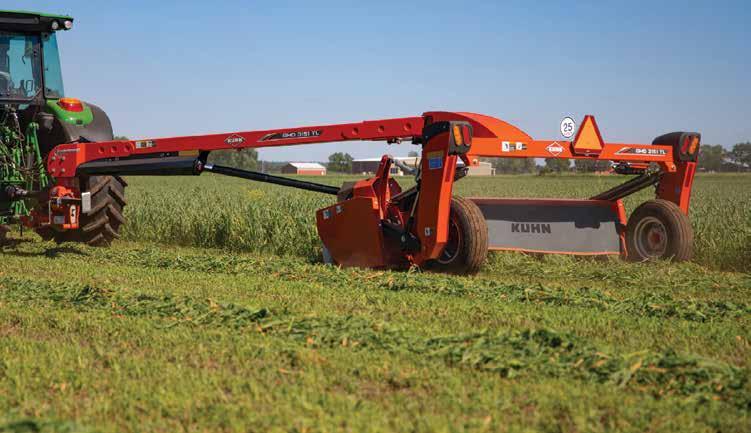




Madison, WI
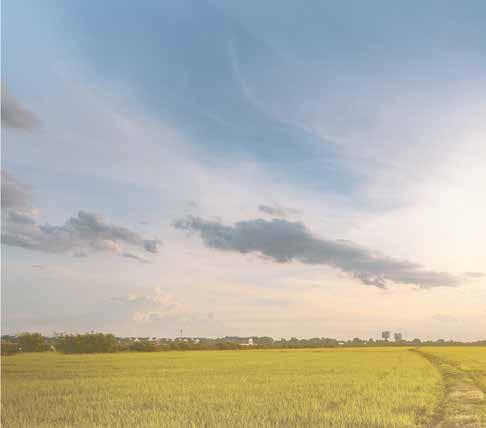

Allenton, WI
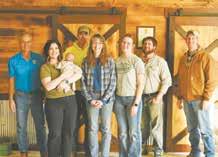
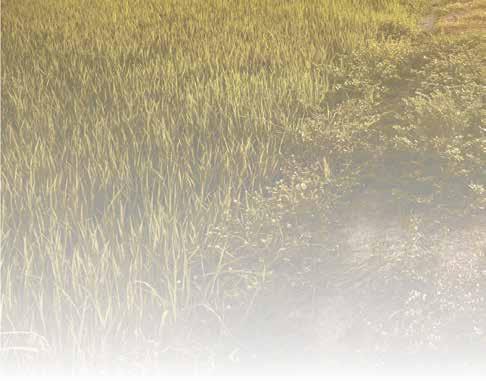
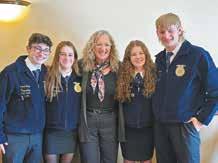


Eden, WI
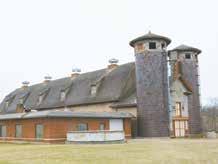
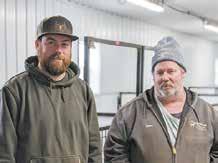
















• Automatic pump calculates the proper amount of water, cleanser, and disinfectant to fill the mat 24/7.
• High quality mat placed at the exit of the robot or parlor to deliver fresh treatment for each cow
• Cleans and conditions hooves to promote overall hoof health.


• Skin care for healthy claws
• Ensures good adhesion to the claw
• pH-neutral
• Contains natural extracts (propolis)
• Optimised for the MS AutoHoofClean System
• Environmentally friendly
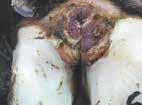
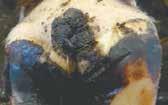


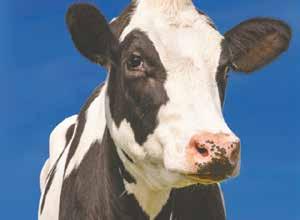




Steve Peterson (from le ), John Meyer and Trent Henkes stand in the milking barn this past winter at Henkeseen Holsteins near Luana, Iowa. Meyer is the former CEO of Holstein Associa on USA and Peterson is the associa on’s regional representa ve.
With elite-level scores and highproduction cows, Henkes felt his herd was trending in the right direction, but it was Marci’s daughter, Henkeseen M Hillary that garnered interest in Henkeseen Holsteins.
“Henkeseen M Hillary certainly put us on the map and brought worldwide interest in our herd,” Henkes said. “She scored high as a 2-year-old and was … (a high) protein-indexing cow. … This was in the 90s, when protein was rst becoming an important trait.”
With interest in his cows, Henkes began to distribute genetics around the world. In all, 20 of Hillary’s descendants were sent to A.I., 13 daughters were Excellent and 19 were Very Good.
“We continue to use the best genetics available when breeding our cows and selecting a service sire,” Henkes said. “A great deal of time is spent Googling Holstein bull names. We do some ushing and (in vitro fertilization) work with our elite cows to hopefully produce more offspring from them. I also really enjoy working with the Red & Whites, which adds marketability to our cattle.”
One of those Red & White Holsteins that has continued Henkeseen’s tradition of high-scoring cows is Henkeseen Lad Nellie Red EX-92. She is


currently milking and producing show heifers. Nellie Red traces back to his rst homebred Excellent, Henkeseen Wayne Noel Nellie, who was the District 1 Holstein Show grand champion.
Along with venturing into Red & White Holstein genetics, his son’s interest in Milking Shorthorns has created a new pool of genetics to work with and added another market for cattle, embryos and semen.
“We are enjoying success with showing and merchandising our Milking Shorthorns,” Henkes said. “We bred a Red & White great, great granddaughter of Hillary to a Milking Shorthorn that has developed into our top Milking Shorthorn cow family. We have bred several World Dairy Expo winners and have sold offspring from that family across the country.”
With the new venture into Milking Shorthorns, Henkes is co-chairing the National Milking Shorthorn Convention this summer, held at the Delaware County Fairgrounds in Manchester. Henkeseen Holsteins will be a featured farm tour. The event will be a family affair as his wife, Leslie, is the nancial chair and his son, Matt, the sixth generation at Henkeseen Holsteins, is the sale chairman.

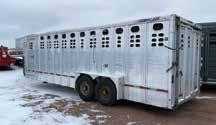











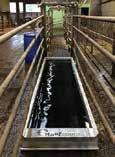
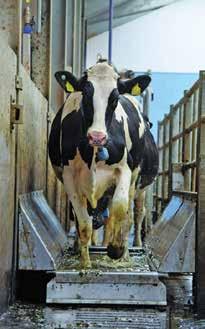
Con nued from HILBY | Page 1
would later work together at Martin’s family farm, Martin Dairy Farms.
Today, Martin Dairy Farms milks up to 220 Holsteins in a tiestall barn and farms 260 owned acres, along with several hundred additional rented acres.
Taking Martin up on an invitation to help on his family’s farm, Hilby eventually bought a few cows and started showing them locally, growing his passion for dairy farming as he became more involved with the farm.
During his senior year of high school, Hilby learned Martin’s father had been diagnosed with cancer. Hilby graduated a semester early and worked on the farm full time that spring, guring he would attend college later. That never happened.
“Brandon’s dad’s health kept declining, and by August, he had passed away,” Hilby said. “I bet you by March, I probably told myself I wasn’t going to college.”
Martin’s dad’s health situation sparked a conversation between Martin and Hilby. Martin, knowing he did not want to farm alone, asked Hilby if he would ever consider becoming his business partner. Without hesitation, Hilby knew he wanted to be a part of the farm.

From 2011 to 2021, Hilby dedicated himself to becoming more than just an employee. Hilby brought skills that complemented Martin’s. Martin was the cow guy, and his dad was always more focused on crops. In 2021, Hilby ofcially became a partner of the farm.
Hilby was not afraid to try new things.
“I had a gut feeling that it wasn’t an eye doctor problem,” he said.
That day, Hilby dropped Martin off at a doctor’s appointment in Platteville. Soon after, he got a call that Martin’s blood pressure was high and there was a concern about a possible clot.
“They did the scan and they found a tumor,” Hilby said. “(Martin) called me (saying), ‘They found something that isn’t good.’”
By that evening, the two were in Madison, knowing surgery was going to happen.
“The Madison hospital said as soon as they got a bed that evening, they would be taking Brandon by ambulance to get things gured out,” Hilby said.
Surgeries, radiation and chemo followed as Martin was treated for glioblastoma grade 4 tumor cancer, a type of brain cancer.
When the two rst found out he was sick, Hilby said Martin kept thinking about the future of the farm.
“He must have had a gut instinct because he was telling me to call the lawyer,” Hilby said. “(He felt) we needed to make sure all our paperwork’s good and that this was kind of preparing for the worst outcome of all of this.’ I told him, ‘Let’s see what they have to say and get through the treatments.’”
When Martin’s father had passed away, the turnover of assets had gone less smoothly, so Martin knew he wanted to easily transition the farm to Hilby. Martin died at the age of 42.
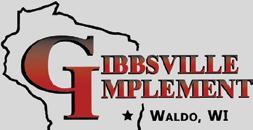


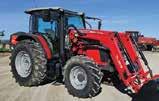















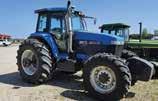








“I was still in high school (and I) must have gone to some meeting and seen something about a pasteurizer for waste milk and(Martin) wasn’t really sold on it,” Hilby said. “I told him, ‘Well, if you don’t want to buy it, I will and we’ll try it, and if it doesn’t work then I’m out of the money and you’re not.’ It turned out to be a good thing.”
There was also a community of people helping with other logistics, including a former employee, Pyzer Pearce, who had left working at the farm to work in construction.
“He had told Brandon that if something ever happened to one of us two, he would come back,” Hilby said.


The two worked side by side, making decisions together every day. Their bond grew from friendship into family after Hilby married Martin’s cousin, and the pair became co-owners of the farm.
Pearce did. What began as a week-long vacation turned into a more permanent return. Pearce is now working toward becoming a partner in the farm. Pearce and another fulltime employee, Willy Houtakker, continue to help Hilby carry on Martin’s legacy.
For Hilby, Martin’s memory lives on in the way he built community, gave others a chance and led with compassion.

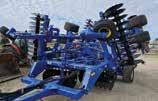





“What made us good business partners — a lot of people referred us to as the married couple because we could argue, but not hate each other — (was that) somebody would have an idea and we’d argue it out until we came to a mutual agreement,” Hilby said. “We made a lot of good decisions that way.”
But in August 2023, things changed.
Even before Hilby married Martin’s cousin, he said they were giving him an opportunity most people give their kids.
“I want to have that same outlook, to give others the same opportunity that Brandon gave me,” he said.


“We were nishing up chores and (Martin) said he was starting to get a headache again,” Hilby said.
Hilby said Martin had been putting off going to the eye doctor.
Hilby hopes farmers will consider possibilities like this to keep their legacy alive, welcoming others to the farm and giving them a chance to become part of the agricultural community.



Those efforts include direct support to farmers in the form of increased funding for the Wisconsin Farm Center, doubling money for its mental health voucher program and adding two positions that will be based in the northeastern and northwestern portions of the state.
“Farmers feed their neighbors, the state, the nation, the world — that’s a pretty big responsibility,” Romanski said. “In the best of times, it’s challenging. If you throw in nancial stresses, market disruption and bad weather, you add even more stress. The services are free, condential and in high demand. The redemption rate of vouchers was at an all-time high last year, twice as high as the year before.” Romanski also requested funding for additional animal health positions.
“It’s not easy to ask for positions for state employees in the budget process,” Romanski said. “The governor included seven positions, so they can be a better resource for preparedness and response. It’s important to our industry.”
Investments for continued strategic market development in dairy and meat processing are included in the governor’s budget, Romanski said.
A new pilot program, Dairy Agriculture Resilience Investment Now Grant, will earmark $1.5 million for on-farm investments. The grant will be available to dairy farmers for modernization and innovation, Romanski said.
The governor has proposed doubling funding for the Wisconsin Initiative for Agricultural Exports.
“The past four years are now the best four years for ag, forestry and food exports on record for Wisconsin,” Romanski said. “Wisconsin products are desired around the world. Last year alone, Wisconsin ag businesses exported products to 151 coun-


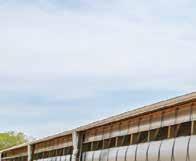


tries. Now is not the time to go backward — we need to keep looking for new markets.”
State Republican Sen. Howard Marklein, co-chair of the Joint Committee on Finance, said the nal version of the budget will vary from the governor’s proposal.
“The governor proposed a budget that spends a little bit of money — the increase is more than 20% over the current budget,”
Marklein said. “We will start with the current level of spending and build the budget from there.”
Marklein advised agriculturalists to get involved in creating agriculture policies, telling their own stories.
“There are fewer and fewer farmers,”
Marklein said. “You need to be louder; you can’t let someone else tell your story. There are few legislators who have any kind of farm background. You need to advocate for yourself and your neighbors.”
Marklein encouraged those in atten-




DANIELLE NAUMAN/DAIRY STAR
Wisconsin farmers share with legislators March 26 during the Wisconsin Farm Bureau Federa on’s Ag Day at the Capitol in Madison, Wisconsin. Over 400 agricultural stakeholders took the opportunity to meet with their legislators.
dance to take part in the four upcoming public budget hearings scheduled around the state throughout the month of April.
“People from the cities will be there, advocating for their policies and programs,” Marklein said. “Farmers, we need to be there as well, so that the committee hears what is important to us.”
Jason Mugnaini, WFBF executive director of government relations, highlighted a few agriculture budgetary items of importance.
“The Agricultural Roads Improvement Program is an absolute priority,” Mugnaini said. “We know that rural roads and bridges are deteriorating, and that is impacting farm transport.
Authored by Sen. Marklein and Republican Rep. Travis Tranel, ARIP was established in 2023, creating the nation’s rst agricultural road improvement program specically focused on rural roads that service agriculture.

Originally funded with $150 million, over $500 million in requests were received in the rst year of ARIP, Mugnaini said. Ninety-two grants were awarded, with priority given to requests with the largest number of farms on the roads, volume of agricultural goods moved and the number of diverted trips or trips that were recurring at reduced rates.
“Those roads will move 15 million tons of agricultural goods — that is an economic value of $12 billion to our state’s economy,” Mugnaini said. “That type of return on investment is unheard of, and it shows how vital ARIP is to our state’s economic success. The governor included $50 million in his budget. We need $150 million for this program again. The need is absolutely inherent.”
Mugnaini said it is also important to continue to invest in developing and expanding export markets for Wisconsin agricultural products. Increasing dairy processing grants to $1 million and meat processing grants to $3 million annually he said will also help reach desired processing capabilities in the state.
Republican Rep. Nancy VanderMeer, speaking with a group of her constituents, reiterated the value of each farmer sharing their own story.
“Agriculture brings $116 billion to our state’s economy — there is a lot of horsepower in this industry,” VanderMeer said. “The number of individuals in our legislature with direct ties to agriculture is a lot smaller than I would hope for it to be. My colleagues from more metropolitan areas are used to thinking of economic development as building a factory or facility. We need to share that our economic development is out in those green elds and cranberry marshes, it’s the animals in the barn. That’s the story we have to convey.”




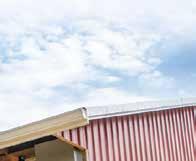
















By Danielle Nauman danielle.n@dairystar.com
MADISON, Wis. — Although he did not grow up on a farm, Wisconsin State Republican Sen. Patrick Testin embraces the importance of agriculture, not only in the 24th Senate District, but throughout the state.
Testin, currently serving his third term in the Senate, has been named the chair of the Senate Committee on Agriculture and Revenue, as well as president pro tempore of the Senate. He also holds the Senate vice-chair position on the budget-writing Joint Committee on Finance.
“When I rst ran in 2016, I thought it was a perfect opportunity to give back,” Testin said. “I’ve been very fortunate to live in a state that has given me many opportunities. I’ve felt like I have always been called to serve. I spent 11 months going door-to-door to hear directly from the people. That perseverance paid off. I’m grateful to have the opportunity and privilege to represent the people of central Wisconsin.”
Since taking ofce in 2017, Testin has held a seat on the
Senate Agriculture Committee, something he considers important because he represents a district that has a wide variety of agricultural industries.
“I’m four or ve generations removed from the farm,” Testin said. “But in a district like mine, I thought it was important to dive right in, headrst, on ag issues.”
Each month, Testin spends a day working a shift at a local business as part of his “On the Job” series. Those visits help him learn more about the impact each employer plays in the local and state economies.
“I was at Feltz Family Farms in Stevens Point the day they made their very rst legal batch of cheese curds,” Testin said. “That was really cool to see and be a part of.”
The inuence of the dairy industry on the state’s economy is impressive, Testin said.
“Since 2017, we’ve seen a roughly 16% increase in the dairy industry’s economic impact on the state,” Testin said. “That growth is a result of the efforts we’ve taken — like the Dairy Innovation Hub and the Dairy Processor Grant Program – and the things we are doing to increase exports and really highlight our great history of dairy.”
With the 107th Wisconsin

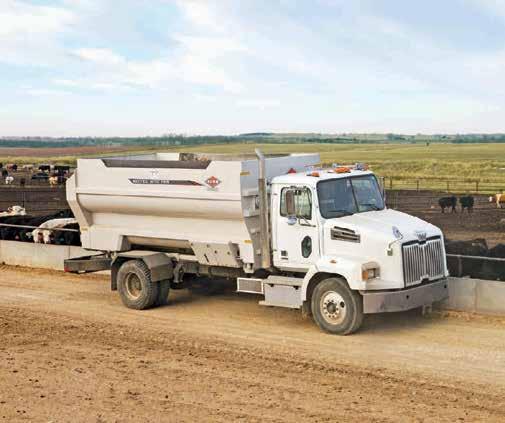



legislative session underway, Testin plans to continue to press for programs that benet agriculture.
“In the last budget, we approved $150 million for the Agricultural Roads Improvement Program and that was wildly popular,” Testin said. “We received nearly $500 million in grant requests, which tells me there is still a lot more to be done to make sure our farm-to-market roads are being taken care of. We’ve been hearing directly from our farmers and our local town and county ofcials, and they want to see that continue. I’m going to be a strong advocate for that.”
Addressing the shortage of veterinarians in rural Wisconsin is another issue Testin sees.
“This seems to be a common theme that we see within a number of these types of professions in the healthcare eld, whether it be for people or for animals,” Testin said. “There is going to be a push from the higher education aids board to develop a rural veterinary scholarship program to entice those who go to vet school here to move to rural areas for loan assistance. The caveat is they’ll have to spend a certain percentage of that time servicing both food and ber animals.”

time. A lower horsepower requirement, compared to competitive models, results in less
consumption. Redesigned discharge options provide fast, even feedout and enhanced reliability from the upgraded auger drive.
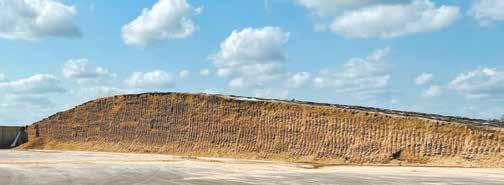
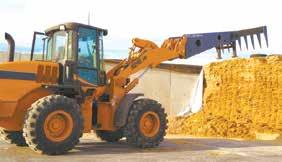


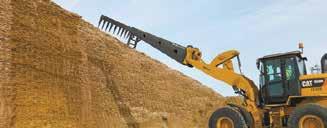

Disease outbreaks that have devastated the poultry industry and threaten the dairy industry he said concern him.
“Seeing the direct impact on our food supply chain during the pandemic was pretty scary,” Testin said. “I think we’re in a better position, but we need to continue to build to insulate ourselves from another catastrophe. We can do that by keeping our food supply as local as we can. Things like meat processing grants have also helped in the wake of that.”
Industry gains made by programs like the Dairy Innovation Hub he said have impressed him.
“Finding new products that can broaden our dairy exports is vital,” Testin said. “Things like making lactose-free cheese, creating valuable products from byproducts — like Knowlton House Distillery and Mullins Cheese making gin and vodka from whey and lactose sugar — that is something I’d have never dreamed of. We need to continue making that investment.”
Local and county efforts to pass ordinances that supersede
state concentrated animal feeding operation regulations are on Testin’s radar as well, and he said he is looking to pursue preemptive legislation to protect farmers.
“We’re seeing this in Portage County right now,” Testin said. “The county board is trying to pass CAFO measures that are more restrictive than state standards. My concern is that if we have a patchwork of regulations in all these different municipalities on how ag, particularly dairy operations, are run, that is just going to drive people out of the industry.”
He said he thinks it is largely a lack of understanding.
“Most people don’t realize the stringent regulations that are applied to a CAFO operation,” Testin said. “How state-of-the-art these facilities are and the hoops they have to jump through. The efuent also has to be cleaner than the water that was coming into it. Because of that lack of knowledge, these larger operations have become lightning rods.”
Testin sees the process as an opportunity to continue to










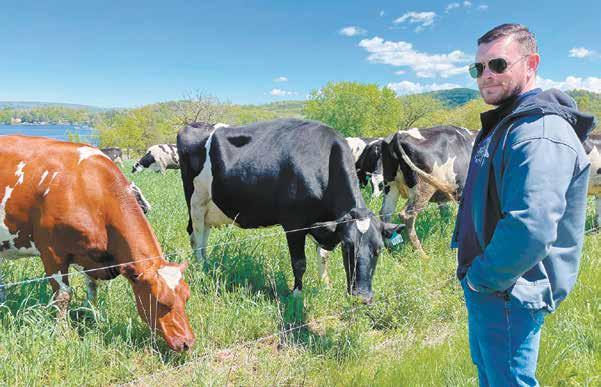
Wisconsin
in May 2024
highlight the work being done by members of Wisconsin’s agricultural coalitions and conservation groups.
“The ag coalition has done a phenomenal job of changing the narrative,” Testin said. “Farmers need to continue making the case for the things they do and let people know
the conservation practices they are employing. That collaboration has borne a lot of fruit.”
To support those efforts, Testin wants to see continued funding for the Producer-Led Watershed Protection Grants program, the Nitrogen Optimization Pilot Program, cover crop reimbursements and the
grazing pilot program.
“All these small tools collectively make a difference to the agricultural community,” Testin said. “If we give farmers the tools they need to be successful and innovative, they’ll do what they do best — making sure our state’s dairy industry remains vibrant.”







Fromtheindustry’s rstlargeroundb db











ltth








hay making process — from mowing your elds to feeding your herd. Now through April 30, 2025, quali ed buyers can receive low-rate nancing or cash back on select Vermeer products.





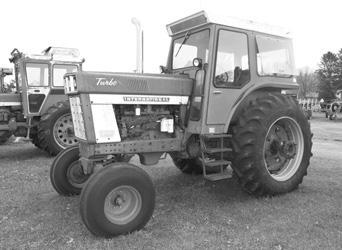
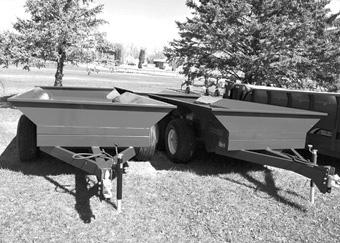
USED TRACTORS
CIH 8910, 1955 hrs., 2WD, like new$105,000
CIH 7120, 2WD, 5800 hrs. ................$55,000
CIH 7120, 2WD, 4,900 hrs. ...............$55,000
CIH 7120, 2WD, 6,100 hrs. ............Coming In
CIH 7110, 2WD, 4500 hrs..................$63,000
CIH 5250 2WD, 4,700 hrs. .............. $54,000
CIH MX120, 2WD, 3,800 hrs. ............$72,000
CIH MX120 w/loader ........................$75,000
CIH MX100, 2WD, open station w/ldr. ...$69,900
IH 1466, 6800 one-owner hrs ............$21,000
IH 1086, 7,500 hrs. .........................Coming In IH 686 . ..............................................$14,000
McCormick MC120 FWA, 2,600 hrs ..$57,000
TILLAGE
CIH Tigermate II, 26’..........................$28,000
CIH Tigermate II 26’ w/rolling basket $32,000
CIH Tigermate 200 w/basket, 34’ ..... $42,500
CIH Tigermate 200, 28’ w/rolling basket ...............................$40,000
CIH Tigermate 200 28’ w/basket ...... $37,000
CIH 3950 disc, 23’, non-cushion.....Coming In
CIH RMX340 25’, 3-bar harrow ......Coming In Tigermate 200 28’ w/rolling basket ....$31,000
DMI Tigermate II, 26.5’, 3-bar mulcher ..................................$14,000
DMI Tigermate 18’ w/harrow ...............$11,000
CIH RMX 340, 28’ w/mulcher ........... $35,000
CIH RMX 340, 25’...........................Coming In
box, red .................$20,500
644, tarp & fenders ..................$21,000
644,green .................................$17,500
557 gravity box, red .................$19,000
544 w/roll tarp & fenders ..........$14,500
President Donald Trump announced a new 10% across-the-board tariff on all countries. Individualized higher reciprocal duties are being imposed on countries in which the U.S. has the largest trade decits. “April 2nd, 2025, will forever be remembered as the day American industry was reborn, the day America’s destiny was reclaimed and the day that we began to make America wealthy again,” Trump said, also saying unfair trade practices have harmed U.S. agriculture. “Today’s actions [are] also standing up for our great farmers and ranchers who are brutalized by nations all over the world,” he said, pointing to high Canadian dairy tariffs and European Union restrictions on American poultry. Trump also criticized Australia for banning U.S. beef while beneting from $3 billion in beef exports to the U.S. last year. Canada and Mexico will be exempt from all the new tariffs. The preexisting 25% tariff on Canada and Mexico is still in effect, and goods that comply with the U.S.-Mexico-Canada Agreement will continue to receive preferential treatment and are exempt.
Level playing eld sought

rocal tariff strategy, saying a trade war will only increase costs for Wisconsin businesses and consumers. “I agree that we need to address trade cheats like China, bring back Made in America manufacturing, and level the playing eld for workers, but Donald Trump’s reckless plan is not going to do that,” she said. “These across-the-board tariffs are going to mean higher costs for Wisconsin families and start a trade war that will increase input costs for farmers and manufacturers and cut off international markets they can sell to.”
Tariff uncertainty pressures dairy markets
“It’s just great information to track everything for your herd.”
three main reports that I use are the lactation report, herd summary and heifer calf listing. Those give me most of the information that I’m looking for.
Which is your favorite and why? The rst one I go to is the somatic cell count report, both herd and individual. It helps me cull problem cows.
How do you use them within your dairy? We use the production and SCC reports for culling decisions and use the fat, protein, and MUN reports to evaluate feed ration changes.
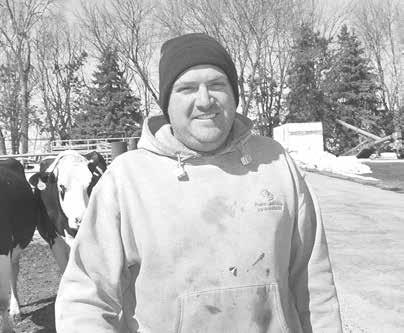
How does testing with DHIA bene t your dairy operation? It gives me paperwork to track all the cattle and reports on which cows to breed. It’s just great information to track everything for your herd. You have a lifetime of information on them, where they came from, when they born, their sire and dam, and so much more.
Tell us about your farm. My wife Becky and I and our children milk 40 cows. We also farm 220 acres of corn, wheat and alfalfa. My dad comes out and helps as needed too.

The National Milk Producers Federation and U.S. Dairy Export Council released a joint statement in reaction to President Trump’s tariff strategy. NMPF and USDEC said this plan can be positive if it is used as leverage to x trade barriers. “A rm hand and decisive approach to driving changes is most needed with the European Union and India to correct their distortive trade policies and mistreatment of American agriculture,” said Krysta Hardin, CEO, USDEC. Gregg Doud, president and CEO of the NMPF, agreed. “If Europe retaliates against the United States, we encourage the administration to respond strongly by raising tariffs on European cheeses and butter, he said. “We also appreciate the president’s recognition of the sizable barriers facing U.S. dairy exports into the Canadian market.”
Baldwin: Trade war will increase input costs
Wisconsin Sen. Tammy Baldwin responded to the White House recip-
Dairy markets are feeling the strain from the new trade tariffs. Mark Newman, a market analyst with Commodity & Ingredients Hedging, noted Class III milk prices have dropped signicantly in recent months. “You know, we were at $19.50, even $20. And now you’re seeing nearby Class III at $17 so it’s fallen to $2 from $3 just from these tariffs,” he said. In response to uctuating prices, dairy producers are taking steps to protect their margins, particularly on feed costs. “A lot of our clients have been booking their meal, whether that be canola or soybean meal,” Newman said, also emphasizing the importance of maintaining exibility in risk management strategies, particularly during the seasonal lull in demand.
Export challenges and cheese surplus weigh on dairy market
Trade uncertainty and rising cheese production are pressuring dairy prices. Sarina Sharp, a market analyst with The Daily Dairy Report, discussed the market during the Central Plains Dairy Expo in Sioux Falls. “Unfortunately, I think that lower is the more likely path, especially for producers in this Central Plains region who mostly get Class III milk revenue,” Sharp said. Uncertainty surrounding trade policies is also affecting international demand. Sharp noted that while buyers are still purchasing, they are cautious about future commitments.


Common names bill resurfaces
Legislation has been reintroduced in the House and Senate to dene a list of common names for ag commodities, food products and terms used in the marketing and packaging of products. The bill directs the U.S. Department of Agriculture and the U.S. Trade Representative’s Ofce to defend the right to use common names in foreign markets, like parmesan and asiago.
Shipbuilding proposal has unintended consequences
The Ofce of the U.S. Trade Representative is hearing from agriculture groups regarding its investigation into China’s shipbuilding dominance. The Trump administration is considering fees of up to $1 million for Chinesemade or operated ships when in U.S. ports. The International Dairy Foods Association said the proposed penalties would lead to an 8% decline in dairy exports. Becky Rasdall Vargas, International Dairy Foods Association
Senior Vice President of Trade and Workforce Policy, said the dairy industry sees the value of U.S.-owned and U.S.-agged ships when supply chains are tested. “USTR’s proposed actions, however, risk inicting unintended consequences on American exporters, producers and workers by raising shipping costs, rerouting global trade and weakening supply chains, especially for time-sensitive, perishable products like dairy,” she said.
Dairy exports dip in February
During February, U.S. dairy exports totaled 463 million pounds. That’s down 38 million pounds from the same period last year. Cheese exports increased, up 3.4 million pounds from a year ago. Exports of butter and whole milk powder also rose, up 6.4 million pounds and 813,00 pounds respectively. According to USDA, exports of nonfat dry milk and skim milk powder declined 42 million pounds from February 2024. Whey protein concentrate exports dropped 8.6 million pounds.
Foremost Farms CEO steps down Greg Schlafer has resigned as president and CEO of Foremost Farms
USA. Schlafer has been with the dairy co-op and dairy manufacturer since December 2019. Previously, Schlafer worked for General Mills, Lamb Weston and Simplot.
Nelson takes the reins at Organic Valley
Shawna Nelson began her career as an intern with Organic Valley nearly 20 years ago. At the end of March, she took over as the co-op’s fourth chief executive ofcer. Nelson is also Organic Valley’s rst female CEO. During her time at Organic Valley, Nelson has worked in marketing, sales analysis, recruitment, employee relations, eld operations and dairy pool management.
Faculty added with Dairy Innovation Hub funding
Thanks to funding from the Dairy Innovation Hub, the University of Wisconsin-Madison and UW-River Falls have hired four new faculty members. At UW-Madison, Yun Jiang will focus on dairy nutrition; Gregg Sanford is working on soil carbon issues and cropping systems ecology; and Rebecca Smith is concentrating on plant science for dairy sustainability. The new hire at UW-River Falls is Md Azhar Uddin. Uddin started last fall and conducts dairy research on topics ranging from marketing to behavioral and experimental economics.
Trivia challenge
France consumes the most cheese on a per-capita basis at 58 pounds per year. That answers our last trivia question. For this week’s trivia, what is the term for the loose ap of skin on the underside of a dairy cow’s neck? We’ll have the answer in our next edition of the Dairy Star.
Don Wick is owner/broadcaster for the Red River Farm Network of Grand Forks, North Dakota. Wick has been recognized as the National Farm Broadcaster of the Year and served as president of the National Association of Farm Broadcasting. Don and his wife, Kolleen, have two sons, Tony and Sam, and ve grandchildren, Aiden, Piper, Adrienne, Aurora and Sterling.


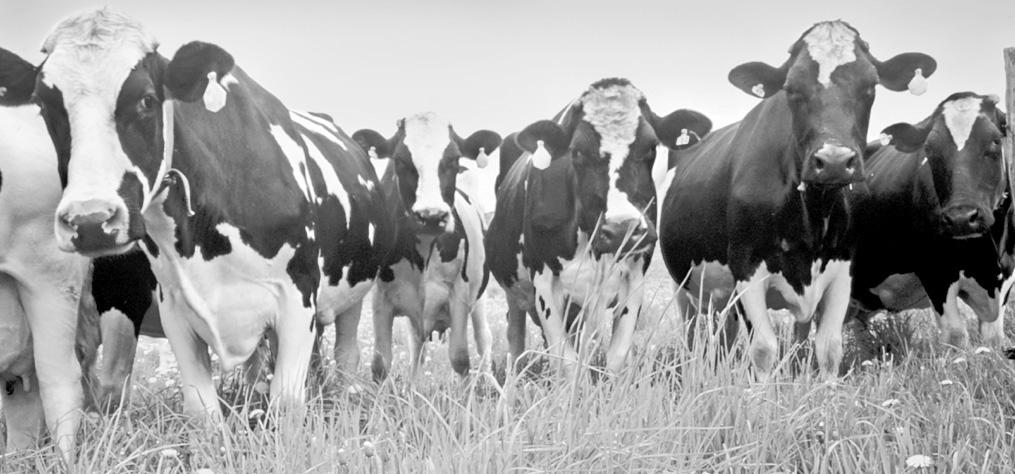





Your planting and tillage equipment require proper maintenance to perform at their most efficient levels. Your milking equipment requires the same amount of attention.

Place your trust in the experienced hands of Centre Dairy of Sauk Centre. As a respected dealer in Sauk Centre for over 33 years, Jon and his staff know the benefits of having properly tuned equipment that can perform at maximum efficiency.
What can you expect?
Check CFM of vacuum pump
Check vacuum controller condition
Check for vacuum loss across the system • Graph pulsators and do any needed repairs.

By Danielle Nauman danielle.n@dairystar.com
MAUSTON, Wis. — Preparing for a concentrated animal feeding operation inspection does not have to be intimidating said farmers and CAFO specialists at a workshop held by the University of Wisconsin-Madison Division of Extension and the Wisconsin Department of Natural Resources, Feb. 11 in Mauston.
“I think it should be something you’re welcoming and not looking at them as adversaries,” said dairy farmer Randy Schmidt. “You need to work with them because they are part of your business, whether you think so or not.”
Schmidt and his family operate a 3,800-cow dairy farm in southwest Richland County. The farm obtained its rst CAFO permit in 2016. Schmidt said the farm is preparing to host a re-certication inspection later this year.
“You know the things they don’t want to see,” Schmidt
said. “They don’t want to see seepage or things like that. Repair the little things you see that need to be repaired. Make sure you have your record in place. You want things to look right, the things that are all traceable back to water you want to be good. Everything is an open book.”
Dr. Jim Mlsna and his family milk between 800900 cows on their Vernon County farm near Hillsboro. Mlsna’s farm is on its third permit.
Being proactive is an important part of operating a large-scale dairy farm, Schmidt said.
“It’s important to keep an open dialogue, open lines of communication,” Schmidt said. “We all know things are going to go wrong, sometimes. The DNR has always maintained to me that if I have a problem, they want to hear it from me rst, rather than having someone calling it in, so be diligent on your response time.”

“I am always the one who takes care of the inspections on our farm,” Mlsna said. “I nd it’s easier to be more honest, to say, ‘Hey, this is what we did, this is what we’ve been doing, what we’re trying to do.’ I would expect the same from our DNR reps that come to the farm, too, to treat us with a little respect and common sense.”
DNR CAFO compliance and enforcement coordinator James Salscheider explained there are two different types of production site inspections: comprehensive and partial.
Comprehensive inspections are planned well in advance and encompass all facilities covered under the permit in question, including satellite sites. A comprehensive inspection will look at all areas of the production site and include a records review, where DNR staff will look over all records required to be
kept for the permit.
Salscheider said a partial inspection can be related to engineering, to ensure compliance of scheduled upgrade construction. A partial inspection can also be related to enforcement, Salscheider said, and can include wet weather inspections, which can be short-notice inspections.
“Inspections typically look great during dry weather, but we want to see your production site when it’s the most stressed,” Salscheider said.
The next comprehensive inspection takes place midway through the permit term and is typically done during the second year of the permit, Salscheider said.
“That mid-term inspection is kind of like a check-up or physical of the site,” Salscheider said. “We’ll make sure all of the reviewable facilities are being maintained and you’re keeping up on the recordkeeping requirements.”

Salscheider said comprehensive inspections are scheduled throughout the permit term. The rst inspection is for a rst-time permittee planning to expand above 1,000 animal units.
Dr. Jim Mlsna Dairy farmer
The most comprehensive site inspection that staff conduct is the permit reissuance inspection, which takes place one year prior to the expiration of the current permit.
“That initial inspection of the production site is a good opportunity for the DNR to get to know you and your production facilities,” Salscheider said. “We’ll see how the logistics are run, look at reviewable facilities that will require engineering evaluations.”
“The reissuance inspection is a really in-depth review of record,” Salscheider said. “We’ll make sure you’re in total compliance of your permit, so we can move forward with the reissuance process.”





With Several Quality Ingredients At Our Disposal, We Can Produce A Wide Variety Of Bulk Custom Mixes To Fit Any Nutritional Need At Our Glacial Plains Feed Mill In De Graff, MN.











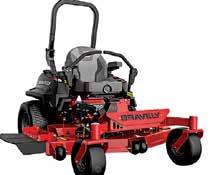




























During the inspection, Salscheider said CAFO specialists will be looking at all areas of the farm identied as production areas.
“We’ll look at your manure storage facilities, solid and liquid,” Salscheider said. “We’ll take a look at your raw materials storage facilities, feed and bedding. We’ll look at barnyards, feed lots, calf hutch areas. We’ll take a look at your runoff control systems for those facilities; storm water conveyance systems; mortality management systems; and manure and processed wastewater transfer systems. We’ll also look at ancillary service areas identied as areas of the production site that are adjacent to the production area but not intended
walls, allowing seepage through both walls and oors, along with perimeter tile blowouts, Salscheider said.
“It’s important to x these areas when they are small,” Salscheider said. “They could quickly get to a size that requires plans and specs to be submitted for approval prior to xing.”
Mlsna and Schmidt agreed continual vigilance makes inspection preparation and compliance easier.
“We try to keep things cleaned up and take care of things that we know are going to be points of concern,” Mlsna said. “We don’t like confrontation and we don’t like to have any interactions with the DNR that we don’t create.”
“My dad always told me to leave it better than you found it, and that you’ll spend your lifetime building your reputation, but you can lose it in 10 minutes. Your actions will always speak louder than your words.”
RANDY SCHMIDT, DAIRY FARMER
for manure convey or handling, processed wastewater handling.”
Some of the common issues found with waste storage facilities include erosion of earthen and clay-lined facilities and cracking of concrete facilities; seeping of water in and out of the facilities; excessive broadleaf and wood vegetation; and evidence of animal burrowing. Salscheider said specialists will be looking for permit markers denoting the margin of safety and the maximum operating level for the waste storage and will ask the farmer about this.
The most common issues found in feed storage areas include cracked and missing concrete on pads and bunker
Schmidt said strict compliance with his permit aids his family in presenting a good face to the public. His farm’s location is 40 miles from Madison, on Highway 15, with two neighboring nature conservancies.
“My goal is to always have something green growing on the farm almost every day of the year,” Schmidt said. “We’re diligent about getting cover crops on. We work to be transparent. … My dad always told me to leave it better than you found it, and that you’ll spend your lifetime building your reputation, but you can lose it in 10 minutes. Your actions will always speak louder than your words.”






















































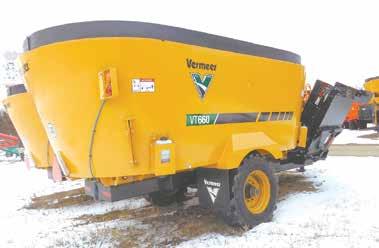
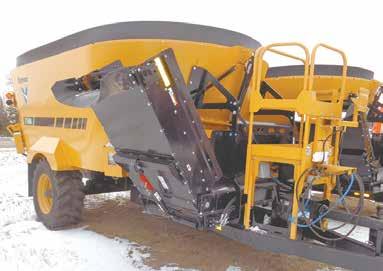



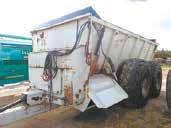
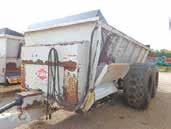


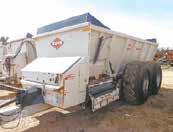
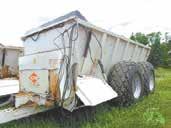




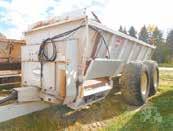
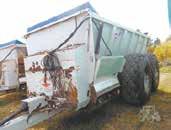



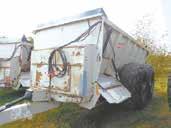

Gabe Goebel, S&L Goebel Farm
Fond du Lac, Wisconsin
Fond du Lac County
270 cows
What is the somatic cell count of your milk? Our SCC average for the month of March was 51,000.
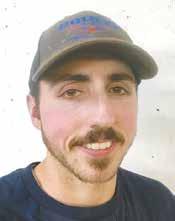
Walk us through your milking procedure. When the cows come into the parlor, their udders and teats are rst cleaned of any manure and sand present and checked for any abnormalities (teat injury, swollen quarters, etc.). Once the rst cow is cleaned and checked, she is dipped with ABS Valiant pre-dip, and we move on down the line cleaning, checking and pre-dipping each cow. We have a double-12 parallel parlor with automatic take-offs. Two people milk, and each person takes care of six cows. After the sixth cow is pre-dipped, we pick up paper towels and go back to the rst cow, wiping each teat and making sure each teat and teat end is clean. We again go down the line until the last cow is wiped off and then return to the rst cow to start attaching units. The prep time per cow is approximately one minute. Once all the units are on, we work on the cows on the other side of the parlor. After the cows are done milking, they are post-dipped with ABS Valiant Pre/Post in the winter months and ABS Valiant Barrier Dip in the summer months.
What three details do you attribute the low SCC to? 1. Sand bedding: Cows are bedded weekly, and sand is groomed twice a day. 2. ABS Valiant pre and post dips. 3. Great employees with cow and milking knowledge.
How often do you review the SCC, and what ways do you monitor it? Our SCC is tested with the daily milk sample taken by our milk hauler, and we get a report weekly. We also test monthly through the Dairy Herd Improvement Association and receive individual SCC for every cow.
If a cow’s SCC rises, what is the protocol to correct it? If a cow’s SCC rises in the DHIA test results, she will be checked during milking for any visible signs of mastitis, and if none are present, she will be tested with the California Mastitis Test. The infected quarter(s) will then be treated with Spectramast LC for ve days. If the mastitis does not clear up, or if the cow has a chronic mastitis problem, she will be culled.
Why is having a low SCC important? A low SCC is important for milk quality, and we receive a premium for a low SCC. It is also important for a cow’s reproduction. High counts during breeding have been proven to have a negative effect on conception rate.
Regarding SCC, what valuable advice have you received? A milking equipment servicing program is important for preventing an SCC problem before it occurs, which we have through Gehring’s Sales and Service. It is also important to have a pre-dip with a good kill time and a good barrier post dip.
Tell us about your farm and family. We have 270 cows and farm 650 acres. Cows are milked twice a day in a double-12 parallel parlor and housed in a fourrow freestall barn with a central belt feeder feeding system. Our milk has been going to Sargento’s St. Cloud plant for more than 15 years. I farm with my parents, Kathy and Steve; my two brothers, Grant and Graham; and my dad’s brother, Leo. My mom takes care of the calves and book work, while my dad helps with chores around the farm and managing the herd and crops. Grant and I do most of the milking. Leo does the feeding and feed management. Our neighbor, Alexa, also helps milk on weeknights in addition to helping my mom with calves. I do mainly herdsman work and help in the elds when needed. Grant does some herdsman work in addition to doing most of the fabrication, repairs and eld work. Graham helps with milking and other work on the farm when he can. He is a full-time milking equipment service technician at Gehring’s Sales and Service and does the service on our milking equipment.




Hall Dairy Farms LLC
Don (from left), Jacob, Cody and Dave Hall and Connor
Tomah, Wisconsin Monroe County 235 cows
What is the somatic cell count of your milk? Our SCC is 75,000.
Walk us through your milking procedure. We fore-strip to look for any abnormal milk and then spray a peroxide-based pre-dip and make sure we cover the entire teat with spray. We leave the spray on the teat for about 30 seconds, wipe it off with a paper towel and then apply the milking unit to the cow. We have automatic takeoffs, but we check them to make sure they are done and then post-dip with Blockade.
What three details do you attribute the low SCC to? The most important step is the fore-stripping. If you bypass this step, it could be several milkings before you realize a cow has a high cell count. We primarily have family members doing the milking who care about quality milk. We never put milk in the tank that we wouldn’t be willing to drink ourselves. It is important to use the data from the Dairy Herd Improvement Association to pinpoint any cows with high cell counts. We use a California Mastitis Test paddle to test all fresh cows before their milk enters the tank and use the paddle to check any cows that are questionable. The cow is then treated if needed, and we also use Udder Comfort. We use ground oat hulls for our bedding on top of the waterbeds. We bed them every four days and clean stalls off every milking and re-bed the area where their udders would be.
How often do you review the SCC, and what ways do you monitor it? We have SCC results after each pickup for the entire tank that we monitor and once a month we check results from DHIA. If one comes back with a high cell count, we will CMT each quarter to see where the problem is. We will treat the cow if necessary.
If a cow’s SCC rises, what is the protocol to correct it? We CMT all four quarters and nd out which quarter has the issue. We will treat with antibiotics if necessary. If she is a low-end cow, she will be culled.
Why is having a low SCC important? There are added premiums for keeping our cell count low, and we want to sell a high-quality product that consumers will enjoy.
Regarding SCC, what valuable advice have you received? Make sure that you utilize the SCC reports from DHIA to pinpoint problem cows.
Tell us about your farm and family. Our farm was established in 1868 and has changed and grown over the years. Dave and Don are the current owners of the dairy, and Don’s sons — Jake, Cody and Brady — assist them. We have one fulltime employee, Connor VonHaden.








Kyle Mathison Cumberland, Wisconsin
Barron County 120 cows
What is the somatic cell count of your milk? 170,000.
Walk us through your milking procedure. Iodine pre-dip; microber towel for cleaning and prep; attach automatic takeoff unit; post-dip with Valiant.
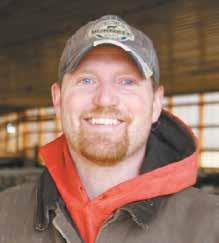
What three details do you attribute the low SCC to? First is consistency. My wife does most of the milking on our farm; I think it is important to have someone in the parlor who knows the cows and can detect possible issues early. Cows are creatures of habit, so there is comfort in the same milker at the same time every day. Second is stall cleanliness. We use sand for bedding. I try to keep the stalls from getting low on sand while also keeping them clean and dry. Third is overall cow health. We believe that feed quality, combined with cow comfort and health, all contribute to our ability to consistently keep our SCC low.
How often do you review the SCC, and in what ways do you monitor it? We test cows monthly and review results with our nutritionist. We also receive text message SCC reports from our co-op weekly. Although these are very helpful tools, most of our early detection and intervention happens in the parlor.
If a cow’s SCC rises, what is the protocol to correct it? As soon as a cow shows mastitis or inammation, she is given leg bands and is taken off the line. Depending on the situation, we may treat her with antibiotics, wait and see if she improves on her own or cull her immediately.
Why is having a low SCC important? We believe a low SCC is an indication of overall cow health. By keeping it low, we hope to prevent costly treatments and other problems that may arise. Low intervention leads to longevity of the cows as well.
Regarding SCC, what valuable advice have you received? Do what works for you and your business; it might not always be the industry standard.
Tell us about your farm and family. My wife, Sara, and I are the fourth generation on my family’s century farm. My dad, Wayne, helps out daily with feeding. We have two children — 10-year-old Grant and 5-year-old IdaRose — who are learning the value of hard work while enjoying the freedom of open space. We have a mix of Holstein and Jersey cows, and we crop 450 acres consisting of corn, wheat, alfalfa, rye and snap beans.
Marlena Wagner
Lena, Wisconsin
Oconto County
650 cows
What is the somatic cell count of your milk? For all of last year, we averaged a SCC of 58,000. Currently, the average SCC for the rst quarter of this year is 50,000.
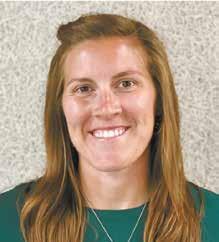
Walk us through your milking procedure. Our milking technicians understand that the milking procedure is critical to udder health. They wear gloves and practice proper sanitation to ensure highquality milk is maintained from the udder to the bulk tank. Our milking procedure is to pre-spray and fore strip the teats a minimum of three times each to check milk quality. Then, the teats are dried with a cloth towel, the units are attached and the teats are post dipped after the removal of the milking unit. Our cows are milked in a double-12 parallel parlor three times a day.
What three details do you attribute the low SCC to? First would be cow comfort and cleanliness in our facilities. Our cows are housed in freestall barns with deep-sand-bedded stalls that are meticulously limed and groomed every shift. Second is proper milking procedures. Keeping parlor equipment well maintained and educating our employees on proper protocols are critical to having high milk quality. Finally, having a healthy herd — a low-stress, wellvaccinated, happy herd — keeps disease down and allows our cows to do their best.
How often do you review the SCC, and what ways do you monitor it? Every day, I record the bulk tank SCC on a spreadsheet. DHIA testing is done once a month, and from that, I review the high SCC cows. Typically, cows on that list I will look at include cows with a spike in SCC, a high rst test or repeat offenders.
If a cow’s SCC rises, what is the protocol to correct it? If I see a rise in a cow’s SCC, I will use a California Mastitis Test to nd the infected quarter. Then, I will take a milk sample. Currently, we are using Mastatest to help identify which cows need to be treated.
Why is having a low SCC important? Having a low SCC is important to us because it reects the health and quality of our herd. By keeping the cows healthy and comfortable, we are able to produce high-quality milk, which is a top priority on our dairy.
Regarding SCC, what valuable advice have you received? A valuable insight that I have received, I believe, comes from my observation of our cows in their daily routine. Milk quality and cow comfort go hand-in-hand. Stressful events can spike a cow’s SCC. So, it is important to be calm and quiet around the cows. Cows are creatures of habit, and minimizing their daily stress is a critical component to producing high-quality milk. Therefore, we strive to be most efcient when handling the cows to least interrupt their day.
Tell us about your farm and family. Jagiello Dairy Farm has been in our family since 1907. Our motto here is, “Remembering the past and ‘moo’ving towards the future.” We are blessed to have had the generations before us establish and maintain a strong foundation in farm life and business. Currently, my brother Tyler, my cousin, Donnie, and I are the fth generation managing the dairy. It is our goal to position our dairy well to grow into the future, so we can continue with this great way of life for all the future generations. We milk 650 cows and farm 3,500 acres.



















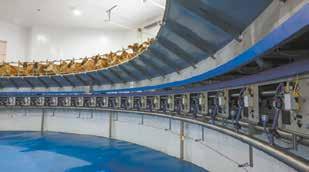
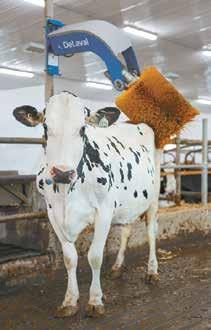

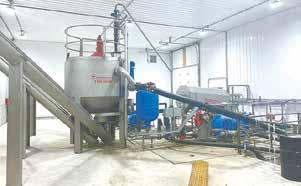
•
•
•
How many times a day do you milk, and what is your current herd average, butterfat and protein? Our herd is 730 cows; we milk 650 cows three times a day. Our current herd average is 33,197 pounds of milk (103 pounds per day), with tests of 4.7% butterfat and 3.3% protein.
Describe your housing and milking facility. We have a four-row barn for our rst and primarily second- and thirdlactation cows. We have a 6-row barn for our aged cows. The barns are both tunnel ventilated with pasture mats and sawdust bedding. Our parlor is a double-12 parallel.
Who is part of your farm team, and what are their roles? Jason manages the nutrition for the herd with a fulltime feeder. He also manages the crop operation and oversees nances with his wife, who does the books. Derek manages the calf barn, schedules employees, takes care of herd manager duties and helps in the eld as needed. Justin does all the A.I., cattle sorting between barns, herd health checks and vaccinations with the vet, along with eldwork as needed. Derek’s son, Devin, is primarily in charge

Jason (from le ) and his wife, Sharon, Derek and his wife, Lori, Amber and Jus
March 25 at the farm near Westgate, Iowa. Jason, Derek and Jus n Decker milk 650 cows with a herd average of 33,197 pounds of milk and tests of 4.7% bu erfat and 3.3% protein.
of maintenance of equipment and facilities along with the bulk of the eldwork, including planting and combining. We have a full-time feed man who also helps with eldwork and another full-time man who works closely doing herd management with Derek. We also have two shifts of fulltime milkers. Besides our full-




time milkers, we have help from high schoolers who milk after school until 8:30 p.m. We have one employee who feeds calves, working a 3-hour morning shift and a 3-hour afternoon shift.
What is your herd health program? We have a herd health check every Tuesday
with the Winthrop vet clinic. We pregnancy check the milking herd weekly and do heifer pregnancy rechecks on the herd twice a month. Our vaccination program is as follows: At birth, we give Inforce 3, followed by Bovishield Gold and Vision 7 at 4-5 months and 10-11 months; at the rst pregnancy check,
we give salmonella and Vision 7; at the 6-month pregnancy check, it’s Guardian and JVac, and we’ll do that again at six weeks from calving and two and a half weeks prior to calving; at the fresh check, we’ll do Bovishield Gold and J-Vac followed by another JVac at the pregnancy recheck; nally, at dry check, we’ll do salmonella and Vision 7 and dry off is dosages of Guardian and J-Vac.
What does your dry cow and transition program consist of? Cows are dried up every Wednesday between 48-56 days. Some are dried off earlier if they are low producers or due with twins. Far-off dry cows are housed in free stalls. They are moved to a bedded pack area at three weeks before due date. Cows calve in a group setting on a bed pack.
What is the composition of your ration, and how has that changed in recent years? Our ration consists of low-lignin haylage, protein mix, cottonseed, dry ground corn, roasted soybeans and brown midrib corn silage and some liquid molasses. We


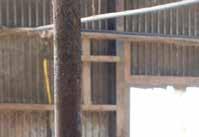




Thanks to unique bolus technology and precise
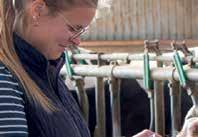

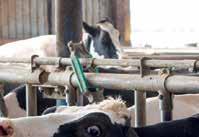
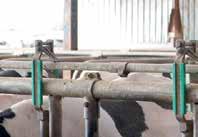

































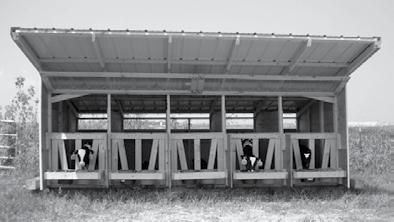

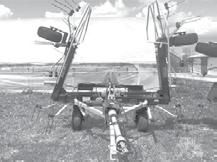
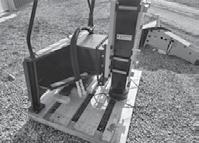



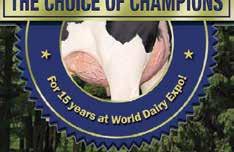

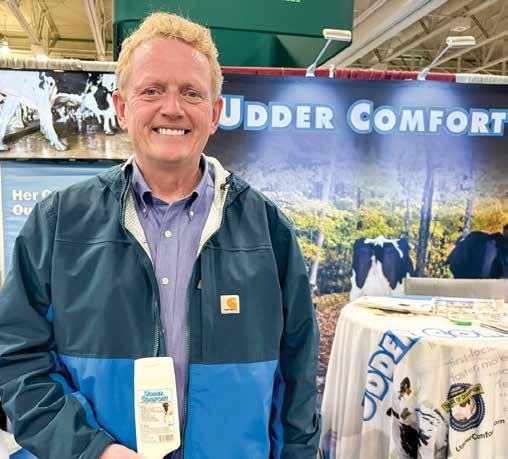
“We have used Udder Comfort™ for 15 years. We use it on any type of swelling or edema. Everyone milking knows if a cow comes through with any swelling in the udder, it’s just automatic. You don’t need told or asked, you apply Udder Comfort, and the vast majority of the time you see results afterwards,” says John Burket, Burket Falls Holsteins, East Freedom, Pennsylvania.

“We use Udder Comfort on our fresh cows, particularly on first-calf heifers. It’s a must. We haven’t tried other products because Udder Comfort has been so successful for us. It’s a natural fit for our herd. Everyone milking here realizes this, uses it, and the results are positive.”
As HAUSA president, John says: “Every day on the dairy farm presents an opportunity. It’s all about the amazing Holstein cow and the people who own and care for her; Best of both worlds.”



have moved to a higher concentration of BMR in the diet over the past few years as we have focused on increasing digestibility for dry matter intake.
Tell us about the forages you plant and detail your harvest strategies. We plant roughly 1,000 acres of corn each year with 450 acres of BMR corn silage. We shoot for a half milk line on the kernel to optimize starch when harvested. We plant around 500 acres of beans every year, with the bulk of them going into higholeic beans this year so we can feed even more and offset some more of the purchased fat costs. We have around 350 acres of low-lignin alfalfa, harvested as 100% haylage every year.
What is your average somatic cell count and how does that affect your production? We average about 130,000 on our SCC and feel this a good number, considering we are not looking to bed with any sand.
What change has created the biggest improvement in your herd average? We have had multiple changes over the years, but we feel adding tunnel ventilation in 2020 to both milking barns was huge for us. Before that, we struggled every summer with falling production that usually wouldn’t
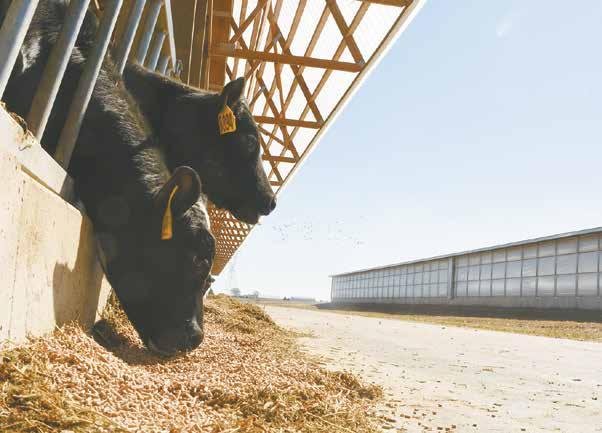
be recovered until late fall. Now, production may dip a few pounds in extreme heat and humidity, but it usually recovers quite fast once the heat subsides. A new calf barn in 2016 also helped propel our heifer performance signicantly. A more recent addition of a new barn nished in December 2023 to house 4-11-month-old heifers has allowed us to introduce total mixed ration at a younger age, and we hope to see the benets of that already this sum-


mer. Sexed semen, along with an aggressive double ovsynch program, has kept pregnancy rates much higher than we have ever seen.
What technology do you use to monitor your herd? We use SCR collars for heat detection and rumination. Our dairy data is entered into PCDart. We also use EZfeed technology in our mixer tractor for more precise management of feeding data. That has been quite benecial.
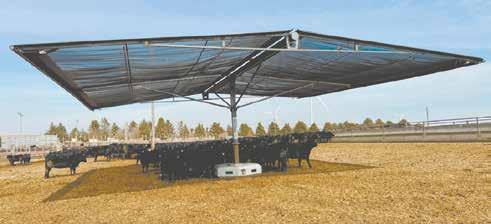

sq. ft.
• Best strapping system in the industry
• 70% shade on mesh tarp
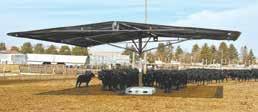

DAN WACKER/DAIRY STAR
Calves eat total mixed ra on March 25 on the newly constructed calf barn at Top-Deck Holsteins near Westgate, Iowa. The Deckers moved calves into the new barn in January.
resistance and fertility. Using this strategy provides us with the best ability to maximize production when all other management factors are well executed.
List three management strategies that have helped you attain your production and component level. First, focusing on reducing cull rates to keep older cows around longer has been something we have honed in on the last few years. That is really where you put it in the tank. Second, we have a very sound breeding and heifer rearing program with the goal to have as high a conception rate as possible. Third, we have highly digestible feed put up at the proper moisture.
What is your breeding program, and what role does genetics play in your production level? Our breeding program is a double ovsynch program. Genetics plays a huge role. Our goal is for our cows to produce a lot of milk with high pounds of fat and protein. We also want trouble-free cows that last multiple lactations. We use elite genetics through Select Sires and our main genetic selection criteria are milk, pounds of fat and protein, mastitis

“Cleaning
Tell us about your farm and your plans for the dairy in the next year. At the moment, there are no plans for expanding the milking herd. We have general improvements we need to make every year to maintain the facilities. We are focused primarily on maximizing income over feed costs with what we have. My brothers and I are fth generation, with a nephew being sixth generation. Our goal is to be good stewards of the land that has been passed down to us so future generations can enjoy this way of life.


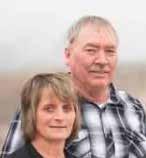





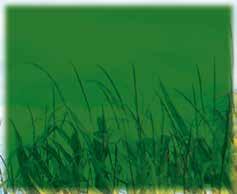










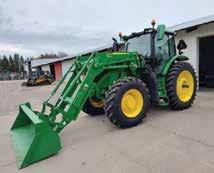






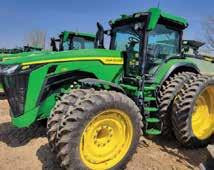

6R 175 2023, 292 hrs.,
84” Bucket, #577143 ....................$77,500
JD 333G 2023, 343 hrs., Wide Rubber Tracks, #579849 ..............................$84,900
JD DB60 2015, 39666 Est. Acres, 24 Row, 30” spacing, #566673............. $145,900


JD DB60 2013, 31093 Est. Acres, 24 Row, 30” spacing, #578708............. $119,900
JD DB66 2022, 9060 Est. Acres, 36 Row, 22” spacing, #576258............... $459,900
JD DB66 2019, 29422 Est. Acres, 36 Row, 22” spacing, #584389............. $385,500
JD DB88 2012, 60000 Est. Acres, 48 Row, 22” spacing, #589832............. $139,900
JD 6R 155 2024, 63 hrs., Cab, MFWD w/ Suspension, #572329
JD 6R 155 2024, 147 hrs., Cab, MFWD, #591533 ....................................
JD 6R 155 2024, 156 hrs., Cab, MFWD, #591538 ....................................
6R 215 2024, 203 hrs., Cab, MFWD w/ Suspension, #561234 ............

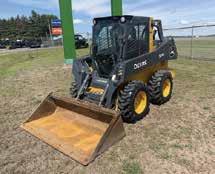





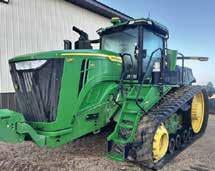

7R 230 2023, 415 hrs., Cab, MFWD, #586953
JD 7R 310 2023, 790 hrs., Cab, MFWD w/ Suspension, #583432
JD 8R 410 2024, 110 hrs., Cab, MFWD w/ Suspension, #593977 ............
JD 8R 250 2024, 248 hrs., Cab, MFWD w/ Suspension, #591742 ............
JD 8R 410 2024, 250 hrs., Cab, MFWD w/ Suspension, #593988
JD 8R 370 2024, 720 hrs., Cab, MFWD w/ Suspension, #590773 ............ $439,900
JD 8R 370 2024, 835 hrs., Cab, MFWD w/ Suspension, #590828 ............ $437,900
JD 8R 370 2024, 950 hrs., Cab, MFWD w/ Suspension, #591035 ............
JD 8R 310 2023, 159 hrs., Cab, MFWD w/ Suspension, #582309 ............
JD 8R 230 2023, 400 hrs., Cab, MFWD, #579785 .................................... $279,900
JD 8R 280 2023, 400 hrs., Cab, MFWD w/ Suspension, #579792 ............ $349,900
JD 8R 310 2023, 528 hrs., Cab, MFWD w/ Suspension, #592709 ............
JD 8R 370 2023, 620 hrs., Cab, MFWD w/ Suspension, #585436 ............
JD 8R 230 2023, 641 hrs., Cab, MFWD w/ Suspension, #579474 ............
JD 8R 370 2023, 672 hrs., Cab, MFWD w/ Suspension, #577931 ............
JD 8R 410 2023, 1050 hrs., Cab, MFWD w/ Suspension, #587664 .......... $419,000
JD 8R 310 2023, 1318 hrs., Cab, MFWD w/ Suspension, #584308 ..........
JD 8R 370 2022, 821 hrs., Cab, MFWD w/ Suspension, #585317
8R 280 2022,

















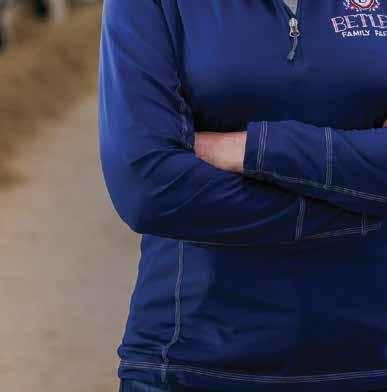


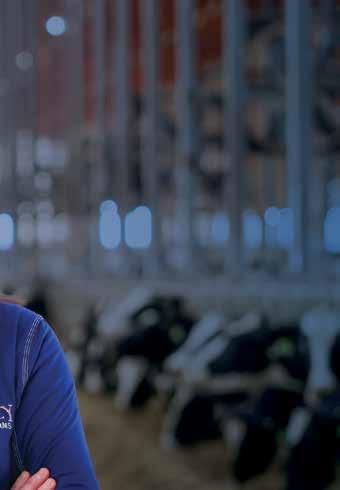






















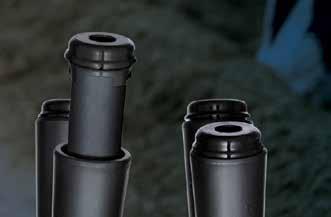
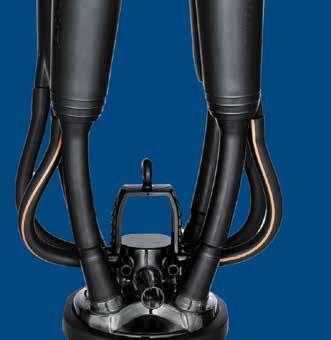






Dairy Mora, MN 320-679-1029 Pierz, MN 320-468-2494 St. Charles, MN 507-932-4288 Wadena, MN 218-632-5416
April 1-3; 8-10; 15-17; 22-24; 29-30
The Dairy Signal ® Online, noon - 1 p.m.
Visit www.pdpw.org to participate in live-streamed event. Audio/video recordings also available free.
April 1, 8, 15
Dairy’s Visible Voice ®
April 1: Pagel’s Ponderosa, Kewaunee, Wis.
April 8: Weiss Family Farms, Durand, Wis.
April 15: Miltrim Farm, Athens, Wis.
Visit www.pdpw.org for details.
April 5 - 17
PDP International Tour of Italy
Visit www.pdpw.org for details.
May 1, 6-8, 13-15, 20-22, 27-29
The Dairy Signal ® Online, noon - 1 p.m.
Visit www.pdpw.org to participate in live-streamed event. Audio/video recordings also available free.
PDP mission: to share ideas, solutions, resources and experiences that help dairy producers succeed.

Caring for our land and animals is a top priority on our farm, just as it is on everyone’s. However, the practices and management strategies we each adopt are different based on our operation’s geography and soils, needs for livestock feed, nancial situation, equipment and labor availability, among other factors.
We farm about 2,000 acres near Pittsville, Wisconsin. It isn’t the best-quality farmland around; in fact, cranberry marshes dot the landscape nearby. We’ve carefully managed our rotations over the years based on our needs for corn silage and haylage. We’re not able to grow straight alfalfa on many of our acres, so we grow an alfalfa/ grass mix or a red clover/grass mix.
principles that guide us as we think about adding and expanding our changing conservation practices, including those listed below.

By Paul Lippert
As we’ve been able to add acres over the years, we’ve also gained exibility to be more creative with our rotation to get the production we need, while not pushing our best land too hard with continuous corn. Double cropping triticale with either soybeans or corn has allowed us to grow more feed on our better acres that is truly digestible. Adding wheat and summer annuals to the rotation, along with adopting no-till practices and cover crops, has increased quality and yields in our rotation.
We also primarily work with custom operators, so every pass of tillage equipment means added cost to the operation. When windows for planting are already short, the possibility of being able to plant in no-tilled or minimum-tilled ground more quickly is really a benet.
It has been a big transition for us to move from chisel plowing every time we planted corn to no-till. I won’t say we have it all gured out. In fact, we are still learning something new each year. We have found a few
As farmers, we’re fortunate to have a wealth of resources for advice and information. For conservation practices, a good starting point is to nd farmers who’ve already been using the practices you’re interested in. We have a neighbor who has been notill farming with cover crops for a number of years. To be honest, the things he did 10 years ago — practices we thought were nuts — don’t seem so crazy anymore, and I appreciate the opportunity to learn from him.
In Wisconsin, local watershed groups and the Discovery Farms program through the University of WisconsinMadison Division of Extension offer a wealth of knowledge and experience, and attending Professional Dairy Producers conferences and training programs are as valuable for the content as well as the networking with other farmers. And we all know, when a group of farmers is gathered in one location, there’s always an opportunity to “talk farming” and learn about what others are doing.
Start small
When trying something new, start on 40 acres, not 1,000. Starting small gives you the chance to experiment with new crops or timing and compare results, then build a foundation to expand on the next growing season.
Ask questions
We can avoid a lot of headaches by asking questions. Don’t be afraid to ask someone to explain new terms or walk through
the nuances of different equipment options. If a custom operator or vendor isn’t willing to try something new, nd out whether they are simply stuck in their ways or if there is a technical, nancial or other reason why it isn’t possible.
Whether it is understanding nitrogen cycling or the variations in dribble bars and injection rates for manure application, the learning curve can be steep. Taking every opportunity you can to ask questions for shortening that curve will pay dividends.
Be exible
What works one year may be a terrible idea the next, depending on weather, growing conditions and many other things. For example, planting into green cover crops works great until the rye gets away from you. Knowing when to terminate your cover can be the difference between success and frustration. For our part, we’ve learned to shift gears to summer annuals sooner when spring gets away from us. Those summer annuals can deliver real soil health benets, allow for exible manure application and provide winter cover.
We all want to grow the best feed possible in the most efcient manner and do what is best for our land and water resources. Sharing ideas, learning from each other and being open-minded and exible will benet everyone.
Paul Lippert of Pittsville, Wisconsin, owns Grass Ridge Farm LLC with his father, Matt, and brother, Carl. The dairy is home to 700 registered Holsteins and Jerseys as well as 600 youngstock. Paul is the herdsman and human resources manager. He graduated from UW-River Falls with a dairy science degree. Paul serves on the PDP board of directors.


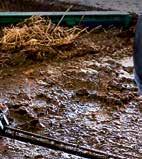
























By Stacey Smart stacey.s@dairystar.com
ALLENTON, Wis. —
In January 2024, 27-year-old Curtis Nehm lost his life in a farm accident. The tragedy prompted a grief-stricken community to create a program focused on the safety of the younger generation. Plans for the program began the day of Nehm’s funeral, following a tractor tribute in his memory.
“We wanted to put something together again,” said dairy farmer Allen Dornacker. “I have two boys, ages 12 and 13, and they did a farm safety camp in Mishicot. If you don’t train kids when they’re young, when are you going to train them? When are you going to sit down as a farmer and do it?”
Dornacker, who milks 350 cows near West Bend, is serving as chairman of the Washington County Farm Bureau Youth Farm Safety Program. Spearheading the program was Ronald Naab. Naab is in his 60th year serving on the Allenton Fire De-
partment and in his 47th year doing agricultural rescues and providing rescue training.
“Many of us in the area were concerned with the lack of tractor and farm safety programs to help our kids be safe on the farmstead,” Naab said.
Within two months, the safety program was launched. Learning a safe attitude with farm equipment, animals and other agricultural hazards is the key takeaway of the program. Youth successfully completing the course receive a state certicate and certication card. Washington County’s program is based on curriculum developed by Purdue University.
The community has come behind the endeavor, offering monetary support and giving their time to make the program a success. Numerous volunteers help with instruction and training, including dairy farmers, paramedics, reghters, law enforcement, agriculture instructors, mechanics and more.
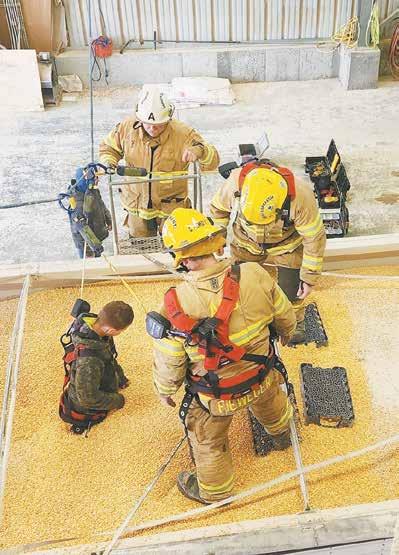
This year, 32 youth partook in the program run by more than 40 volunteers. For the second year in a row, the class was lled to capacity and had a waiting list. The program is open to youth ages 12-16. Participants must attend three, 8-hour sessions for a total of 24 working hours to become certied. The comprehensive hands-on program was held on three Saturdays in March.
The program kicked off at Marshvue event center and the dairy farm of Justin and Samantha Krueger near Allenton, where stations addressed general farm safety, farm hazards, tractorpowered implements and tractor safety, working with animals, manure storage and feed safety.
“Curtis’ death really hit home for a lot of us,” Samantha Krueger said. “It struck a nerve that maybe we should do something to create awareness. If we can help prevent a tragedy in the future, it’s more than worth it.”
A friend of the Kruegers who was in a baler accident shared his story with the kids.
A par cipant of the Washington County Farm Bureau Youth Farm Safety Program stands in a semi-trailer lled with corn as volunteers demonstrate a grain bin rescue March 8 at Farmers’ Grain & Feed in Allenton, Wisconsin. The program is open to youth ages 12-16. Turn to FARM
Air King industrial air cleaners are a valuable tool for capturing most airborne nuisance particulate. Our self-contained filtration units continuously pull contaminated air through multiple stages of highly efficient micro-glass filters. The filtered air is then recirculated back into the working environment without the need for duct work. This results in a cleaner, healthier atmosphere for employees, while saving you money by keeping heated or air-conditioned air inside your facility.




Con nued from FARM SAFETY | Page 25
“He got crushed inside a baler, and it is an act of God that he is around today,” Krueger said. “It was powerful to have someone who survived a tragic accident give a rsthand recap of what happened. It puts it in perspective for kids who think, ‘Nothing is ever going to happen to me.’”
The second Saturday session was hosted at Farmers’ Grain & Feed in Allenton where youth learned about power takeoff hazards, grain bin hazards, tractor components, all-terrain vehicle safety, equipment rules of the road and practical driving experience. A semi-trailer lled with corn was used to demonstrate a grain bin rescue.
“We suck the kids into the corn up to bellybutton height to show them how we have to rescue them,” Naab said. “We impress on them the need of having fall protection devices. If entering a conned space, you should be tied off and secured to something outside the area you’re in.”
Naab recommends the use of a full-body harness with a rope attached. If there is an abrupt movement or drop, the harness locks, preventing the person from falling further.
“My hope is if we im-

A crew determines how to release an assimilated individual trapped in a pull-type corn picker from the
treatment during the Agriculture Rescue Technician Training March 29 in Allenton, Wisconsin. The training covered a
of agriculture accident scenarios with sta ons including disentanglement, skid loader entrapments, ropes and rigging, grain bin rescues, large animal recovery and a working dairy farm tour, including equipment opera ons.
press these things on the kids, they’ll impress it on their parents,” Naab said.
Day three of the program took place at the Allenton Volunteer Fire Department and Farmers’ Implement in Allenton where Nehm used to work. The nal session covered re extinguishers, rst-aid and emergency response, and included a written test and practical driving test.
“According to Wisconsin state law, if you’re going to
work on a farm, even if it’s a relative’s farm, and you’re between the ages of 12-16, you have to take this type of program,” Naab said. “If you’re going to drive on the road, you need to be certied.”
A point repeatedly driven home is the need to wear a seatbelt.











“You need to wear seatbelts, even in a skidsteer,” Naab said. “If it comes to an abrupt stop because you hit something, like a rise in the concrete, you’re going to go over the drop over bar and hit the crossbar on the head, and you’re going to be dead.”
Naab said the cyclical nature of farming presents dangers year-round.
“As we transition through the seasons, equipment changes, and it’s important to know how to work with different pieces — from discs and plows to choppers and balers,” Naab said. “We also explain the importance of not working on any piece of equipment when it’s operating.”
Kids learn hand signals, allowing them to communicate even around loud equipment. If working with someone who does not speak the same language, hand signs can be used to tell them to lower, raise or stop a piece of equipment.
“A lot of us who are helping put this program on have small children growing up in the farming world and want them to be safe,” Krueger said. “We also have young employees who should be learning these things so we can avoid accidents.”
A community that was hurting has come together to instill safety
into the daily routine of those who work in agriculture.
“Unfortunately, it took a tragic accident to get a safety program back in this county,” Naab said. “I’m a strong believer that out of every tragedy, there is always something good that comes from it…In Curtis’ name, we are making a positive difference.”
Washington County also hosted an Agriculture Rescue Technician Training in Allenton March 28-29 sponsored by the Dodge County Fireghter Association and Washington County Fire Training Ofcers Association. The training, which is for reghters and emergency medical services personnel, covered agriculture accident scenarios they may be called to respond to.
“The training was to help add (knowledge) tools to their toolbox to help resolve the safest and efcient removal of a patient or a victim for entanglement into an agricultural piece of equipment,” Naab said.
Fifty-four participants and 32 instructors were part of the 2-day event. Stations included disentanglement, skid loader entrapments, ropes and rigging, grain bin rescues, large animal recovery and a working dairy farm tour, including equipment operations.























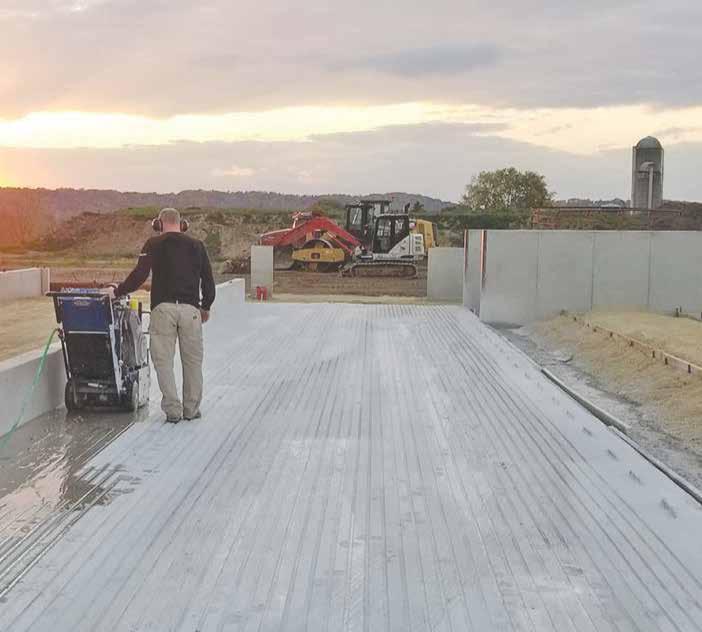


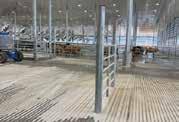






Paul Mueller Company’s MAXXimizer™ L-40 package chiller, designed to ease the daily burdens of dairy farmers, has plug-and-play design and cloud connectivity, so you benefit from remote, real-time access to your refrigeration system data.

Central Ag Supply Juneau, WI; Baraboo, WI
Advanced Dairy Spring Valley, WI; Mondovi, WI; West Salem, WI; Mora, MN; Pierz, MN; Wadena, MN; St Charles, MN
Ederer’s Dairy Supply Plain, WI; Blanchardville, WI; Dodgeville, WI
Central Ag Supply Juneau, WI; Baraboo, WI
J. Gile Dairy Equipment, Inc. Cuba City, WI
Eastern Iowa Dairy Systems Epworth, IA
Monroe Westfalia Surge Monroe, WI
Ederer Dairy Supply Plain, WI
Professional Dairy Services Arlington, WI
Fuller’s Milker Center Lancaster, WI; Richland Center, WI
Redeker Dairy Equipment Brandon, WI
Seehafer Refrigeration, Inc. Marshfield, WI; Sparta, WI
Gorter’s Clay & Dairy Equipment Pipestone, MN
Stanley Schmitz Inc. Chilton, WI
J. Gile Dairy Equipment, Inc. Cuba City, WI
Leedstone
Total Dairy Services Kewaunee, WI
Tri-County Dairy Supply Janesville, WI
Melrose, MN; Glencoe, MN; Plainview, MN; Menomonie, WI; Sparta, WI
Fuller’s Milker Center Lancaster, WI; Richland Center, WI
Lely Center Monroe Monroe, WI
Eastern Iowa Dairy Systems Epworth, IA
Midwest Livestock Systems Zumbrota, MN; Renner, SD; Menomonie, WI; Kaukauna, WI; Weston, WI
Sioux Dairy Equipment Rock Valley, IA; Colton, SD
Monroe Westfalia Surge Monroe, WI
United Dairy Systems West Union, IA
Professional Dairy Services Arlington, WI
Gorter’s Clay & Dairy Equipment Pipestone, MN
Redeker Dairy Equipment Brandon, WI
Leedstone
Sioux Dairy Equipment Rock Valley, IA; Colton, SD
Melrose, MN; Glencoe, MN; Plainview, MN; Menomonie, WI
Stanley Schmitz Inc. Chilton, WI
Midwest Livestock Systems Zumbrota, MN; Menomonie, WI; Renner, SD
Total Dairy Service Kewaunee, WI
S&S Dairy Systems St. Charles, MN
Tri-County Dairy Supply Janesville, WI
Glencoe Co-Op Assn. Glencoe, MN
United Dairy Systems West Union, IA; Monticello, IA
Tell us about your family and farm. I, along with sisters Kayli, Kaianne and Kaydence, represent the fth generation of Hodorffs farming at our current location. My great-greatgrandfather started farming in 1911 with ve cows, and each generation has developed the farm to become what it is today. Second Look Holsteins is currently owned by my parents, Corey and Tammy Hodorff; my uncle, Clint Hodorff; and my grandfather, Doug Hodorff. We currently milk 1,150 cows and raise crops on 1,500 acres. We focus on producing high-quality milk while caring for the animals, land and environment. Last fall, I married Paul Giese, who has become more involved on the farm. Adding some of his cows has diversied the herd from primarily registered Holsteins to include a variety of breeds.
What is a typical day like for you on the dairy? While each day brings different opportunities, my average day includes managing employees and the milking parlor, administering vaccines or reproductive shots, treating recently fresh cows, troubleshooting, problem solving and cleaning.
What decision have you made in the last year that has beneted your farm? I strive to continually improve employee relations on our dairy through monthly and annual training meetings, celebrating birthdays and work anniversaries and increasing communication with team members. This generates a quality team environment around the farm by increasing overall communication between the management and employee teams. Utilizing a variety of training resources and seminars enhances the knowledge and skill of our team members, providing guidance for them to perform tasks completely and correctly. This also has decreased our employee turnover rate as team members’ thoughts and ideas are heard and addressed.
Tell us about your most memorable experience working on the farm. Growing up, I remember following my dad around the farm, asking lots of questions. Even when we had a lengthy list of tasks to complete, he always stopped and took time to answer each question, teach and follow up. These experiences helped to shape my love and passion for the dairy industry and our family farm. I am blessed to be able to work by his side every day.
What have you enjoyed most about dairy farming or your tie to the dairy industry? I enjoy being able to share this experience and passion with my family. Farming is not only my career, it is a lifestyle. Working with multiple generations of family denitely brings challenges. Some days are long and stressful with little time to rest; however, it is special to enjoy a quick break or meal together
Kalista Giese
Eden, Wisconsin
Fond du Lac County 1,150 cows
with family in the midst of an eventful day. I value the friendships that have been developed through years of exhibiting at local, state and national shows as well as the peer and mentor connections made through dairy industry youth, college and professional organizations and internships.
What is your biggest accomplishment in your dairy career? A highlight of my dairy career was being named a National Distinguished Junior Member Finalist by the Holstein Association USA in 2019, along with being honored as the 2019 Wisconsin Holstein Association Outstanding Holstein Girl.
What are the things you do to promote your farm or the dairy industry? We enjoy opening our farm to various tour groups to help showcase not only our farm but the dairy industry as a whole. We have hosted groups from local preschools through high school classes to homeschool groups to international dairy industry personnel, Dairy Farmers of Wisconsin Buyer Groups and even a dairy-themed bachelorette party. I also occasionally get invited to be a guest speaker in the Campbellsport High School Agriculture Department, teaching various classes about dairy farming.
What advice would you give another woman in the dairy industry? My advice to women in the dairy industry is to follow your intuition. Your ideas and contributions are so important in helping to progress the industry. Make yourself heard and share your input or ideas as they provide a different perspective.
What is a challenge in the dairy industry you have faced and how did you overcome it? One challenge I faced was nding quality labor. When I rst returned to the farm after earning a dairy science degree from the University of Wisconsin-Madison, the farm was experiencing frequent turnover in the midst of COVID challenges. An emphasis on Spanish studies in both high school and college has enabled me to help bridge the communication gap between Spanish and English-speaking team members and management. This increases not only protocol adherence and efciency but also improves the social atmosphere on the farm. Developing a healthy culture has decreased turnover and is helping engage and retain a quality team.
When you get a spare moment, what do you do? I am currently enjoying my rst year as varsity coach for the Campbellsport High School girls soccer team after several years as junior varsity coach. I serve on the Fond du Lac County Holstein Association board of directors and as one of the dairy superintendents for the Fond du Lac County Fair. I also enjoy spending time with my family, crocheting and traveling with my husband.
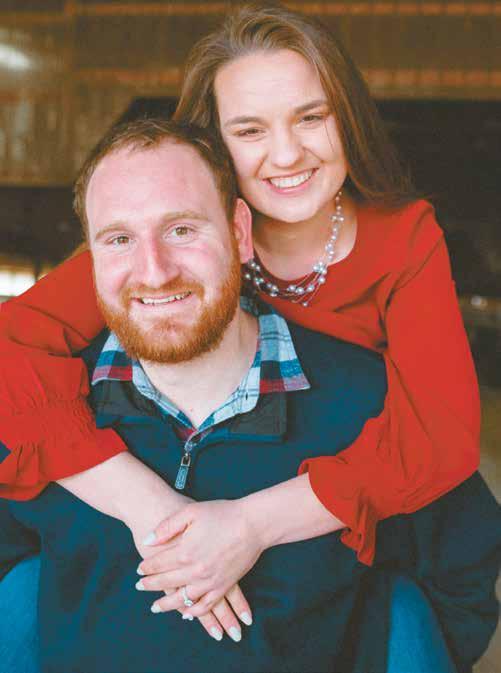
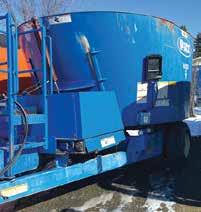



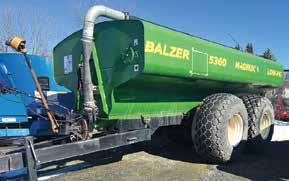

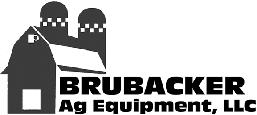
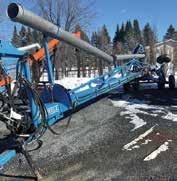


As dairy producers continue exploring options for improving the value of bull calves, we ventured into the beef-on-dairy world at the University of Minnesota West Central Research and Outreach Center in Morris. The journey into beef x dairy crossbreds began in 2018, which was driven by falling calf values and a need to manage replacement heifer numbers. What started with Limousin semen on dairy cows has evolved into a study comparing ve different beef breeds (Angus, Charolais, Hereford, Limousin and Simmental) bred to dairy cows.

In 2018, we used an automatic calf feeder and compared Limousin crossbred calves (both bull and heifer calves) to Holstein and dairy crossbreds. The results showed Limousin-sired bull calves were, on average, 10 pounds heavier at birth than Holstein calves and 4 pounds heavier than Limousin heifer calves. When it came to average daily gain, Limousin-sired bull calves had an average daily gain of 2.2 pounds per day. These calves were more efcient because the Limousin crossbreds consumed about one liter less milk per day than their Holstein counterparts but still outperformed them on growth.
By Brad Heins University of Minnesota
The table has key performance metrics of steers sired by the ve different beef breeds. Birthweights varied, with Angus calves averaging the lowest (83 pounds) and Simmental calves the highest (95 pounds). Hereford-sired calves stood out with the highest average daily gain of 2.34 pounds per day and the highest weaning weight at 237 pounds. In contrast, Limousin and Charolais calves had lower ADGs at 1.98 and 1.94 pounds per day, respectively. Angus and Simmental calves were in the middle. Despite slight differences in growth, all breed groups reached similar nal harvest weights, averaging between 1,381 and 1,447 pounds. Days to harvest ranged from 448 days (Hereford) to 474 days (Charolais). When carcass traits were evaluated, we found some differences among the breed groups, though most did not affect total revenue. Limousin-sired steers had the largest ribeye area at 12.9 inches squared, while
However, we were not convinced some beef breeds were the magical cross for a dairy cow. In a recent study at WCROC dairy, we evaluated growth performance and carcass characteristics of crossbred steers sired by Angus, Charolais, Hereford, Limousin and Simmental bulls. Calves were born between September and December 2023. We harvested these steers in January 2025. The study measured pre-weaning and post-weaning growth of 50 bull calves. Calves were from Holstein dams and crossbred dairy cows that included Montbéliarde, Viking Red, Jersey and Normande genetics. During the pre-weaning phase, calves were fed 10 liters of milk per day using an automated feeder and were weaned at 63 days of age. Milk drinking behaviors were monitored, and growth data was recorded weekly until weaning and monthly until harvest.







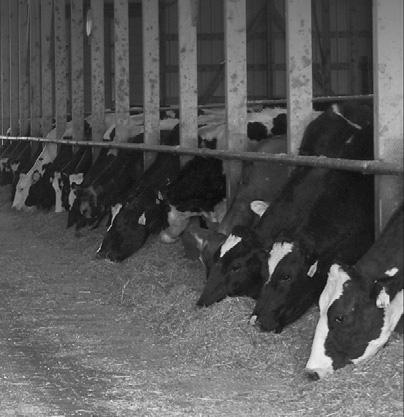






Angus-sired steers excelled in marbling, with an average marbling score of 616.9, which was higher than all other breed groups. Hereford steers had more backfat (0.59 inches) and a higher yield grade (3.1) compared to Limousin steers (yield grade 2.4). Charolais and Simmental steers carried slightly more internal fat than Limousin but were similar to the other breeds.
Five steers graded Prime (two Angus, two Simmental, one Hereford), and 76% graded Choice, with several Angus and Simmental crossbreds qualifying for Certied Angus Beef. Even two Hereford crossbreds went CAB. Despite some carcass differences, there was little variation in total revenue across breed groups. Steer revenue ranged from $2,650 to $2,779, with Hereford- and Charolais-sired calves generating
the highest average income. Even without premiums, Charolais and Hereford made about $100 more per steer because they were just bigger animals with more beef sold. No breed group underperformed overall.
While certain breed groups showed advantages in specic traits, such as marbling in Angus or growth rate in Hereford, the differences were generally subtle.
Multiple beef breeds are suitable for crossbreeding with dairy cows, offering exibility for dairy producers aiming to increase the value of their calves. Management, calf market and feeding program all play a role in the protability of beef on dairy crossbreds. Every breed brought something to the table, and if you feed them right, any of them can make you money.

Dana Adams adam1744@umn.edu 320-204-2968
Luciano Caixeta lcaixeta@umn.edu 612-625-3130
Gerard Cramer gcramer@umn.edu 612-625-8184
Marcia Endres miendres@umn.edu 612-624-5391
Brad Heins hein0106@umn.edu 320-589-1711
Nathan Hulinsky huli0013@umn.edu 320-203-6104
Karen Johnson ande9495@umn.edu 320-484-4334
Emily Krekelberg krek0033@umn.edu 507-280-2863
Claire LaCanne lacanne@umn.edu 507-332-6109
Brenda Miller nels4220@umn.edu 320-732-4435

Isaac Salfer ijsalfer@umn.edu 320-296-1357
Jim Salfer salfe001@umn.edu 320-203-6093
Mike Schutz mschutz@umn.edu 612-624-1205
Melissa Wilson mlw@umn.edu 612-625-4276
Isaac Haagen hagge041@umn.edu 612-624-7455
Michael Boland boland@umn.edu 612-625-3013
Sabrina Florentino slpore@umn.edu 507-441-1765
Scott Wells wells023@umn.edu 612-625-8166
Erin Cortus ecortus@umn.edu 612-625-8288
Melissa Runck mkrunck@umn.edu 507-836-1143





Jorgensen discusses April proof differences
By Danielle Nauman danielle.n@dairystar.com
WAUPUN, Wis. — Driven by data, the dairy industry requires producers to constantly reevaluate information to make the best decisions for continued improvement.
Three times a year, new genetic information is provided by the Council on Dairy Cattle Breeding in the form of proofs. The most recent round of proofs came out April 1, with changes of note being made to the formulas for both Net Merit and Cheese Merit, as well as the 5-year base change.
Kevin Jorgensen, senior Holstein sire analyst for Select Sires Inc., said the 5-year base change is the measure of genetic progress made within each breed over ve years. To readjust genetic levels, Jorgensen said the 2020 cow population becomes the base of zero.
Changes will be applied to production and type, as well as health and tness traits.
Jorgensen compared one of the more dramatic adjustments in the Holstein breed — 74 pounds of combined fat and protein — to the adjustment made two base changes ago in December 2014 of 29 pounds.
“It’s really telling how much genetic progress we’ve made, particularly in the production traits,” Jorgensen said. “We’ve made revolutionary changes, especially in (combined fat and protein). When you speak to producers, this astronomical increase in CFP is pretty direct, most people see it in their bulk tank and components on their farm. It’s not entirely genetic — there have been amazing breakthroughs in how we’re feeding cows — but genetic selection has really intensied in the last generation or generation and a half.”
The base changes are applied equally to all bulls in the population, Jorgensen said, using the example of a bull previously at 174 pounds CFP would now be at 100 pounds. Despite the change in index, the bull will remain in the same percentile. Jorgensen said like every new proof run, additional daughter data will ultimately factor into the bull’s nal ranking.
Jorgensen said changes to the Net Merit and Cheese Merit formulas are based on changes in economic values since the last formula revision. Fat will be factored into the index at 31.8%, with protein applied at 13% and milk at 3.2%. Health and tness traits will continue to comprise 21.2% of the formulation, while calving and fertility will account for 8.7%.
“Net Merit is geared for producers that want a commercially-friendly cow,” Jorgensen said. “There is more emphasis on pounds of fat, relative to protein; more emphasis on reduced body size and on the Feed Saved traits; less on productive life, but more on livability, which makes sense because cull cows are worth more at this stage of the game. There’s probably a little less emphasis on daughter fertility — they reduced a little bit on (Daughter Pregnancy Rate) and increased cow and heifer
conception rates, but not to the degree that DPR was moved down.”
Cheese Merit is calculated similarly, but with a nod to cheese yield; milk is factored in at -2%, focusing on fat and protein, which comprise 48% of the formulation, Jorgensen said.
Jorgensen said the base changes and formula changes are needed to keep pace with the advancing world of dairy cattle genetics, and the speed of those advancements are the reason for some of the dramatic adjustments made.
“The reason we have a base change every ve years is that used to be the span of a generation,” Jorgensen said.
“With our accelerated genetic progress, our generation interval in this genomic selection era is about 21 months now. We’re accounting for 2.5 generations in that same period of time. It’s a credit to the genetic progress we’re making.”
Jorgensen said he speculates that the increased percentage in semen sales from genomic bulls over proven bulls has factored into the rapid increases and shrinking generation intervals.
Jorgensen said the volume of young bulls genomically tested is the cornerstone of that progress.
“Our selection pressure is so intense because of the critical mass of testing so many calves,” Jorgensen said. “That selection pressure is so deep that it is very rare anymore that a bull that is a huge minus on fat test would make it to a marketing lineup — he’d have to be so extreme in the other 70-some traits.”
Jorgensen said Select Sires tested 7,684 Holstein bulls in 2024, out of about 25,509 tested industry–wide. From that pool, Jorgensen said 275 bulls — just over 3% — entered the Select Sires lineup.
Jorgensen said he encourages producers to look inside their operation when weighing the various indexes in their own breeding programs.
“It’s really important for a producer to know exactly what they want,” Jorgensen said. “With the reduced number of replacement heifers we have, every heifer counts, because you don’t have another to take the place of ones you don’t like. We’re at historical lows of female replacements. Our cows are going to have to live longer.”
Jorgensen does not see that trajectory changing.
“No one is going to stop making those little black calves,” Jorgensen said. “They are way too lucrative; they can’t take that revenue stream out of their operation. It’s a huge paradigm shift in our industry. Some people might be rethinking what the right amount of heifers is and making slight adjustments there. We’re seeing a slight increase in sexed semen sales because of that. They are trying to make enough heifers with the fewest uteruses possible, so they can devote more to making those black calves.”
With rapid advancements and constant changes, Jorgensen said he advises producers to use the tools and data provided in the proofs and indexes.
“If we believe in genetics, we believe in the next generation,” Jorgensen said. “It’s not always perfect, but I believe with the genetic progress we are making, this system is far more accurate than the measures we were using in the pre-genomic era.”




































Pepin County Dairy Promotion nds new ways to engage community
By Dan Wacker dan.w@dairystar.com
DURAND, Wis. — Every June, the Pepin County Dairy Promotion committee puts on its June Dairy Breakfast. This summer will be the 37th consecutive year of the event. In 2020, the committee adapted with a drive-through breakfast. Since then, the committee has continued to gain steam and is an integral part of the Pepin County community with an evolved approach.
The committee consists of Wendy Brantner, Tom Brenner, Mara Brunner, Matthew and Nicole Costello, Kyle Danzinger, Bernadette Growchowski, Jenny Jereczek, Jon Koller, Randy and Carma Koller, Marissa and Zach Olson, Greg Pittman, and Celsey and Noah Weiss. The group represents dairies ranging from 40 cows to 2,100 and also includes members who are not actively involved in agriculture outside of their service on the board.
This group of farmers, veterinarians, bankers, feed mill store owners, electricians

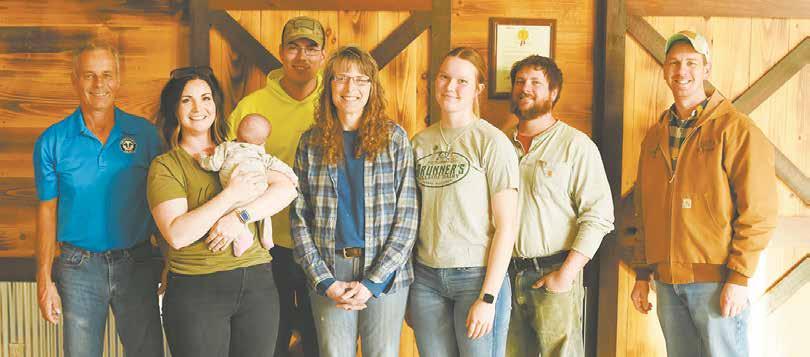
and even a high school senior, provides a unique perspective on dairy promotion. The committee uses those unique perspectives to continue to evolve their ideas for promoting dairy.
“Collectively, we decided to help push agriculture,” Matthew Costello said. “Specically, we wanted to do more than just the dairy breakfast. We have a lot of youth on our board, and I think that serves
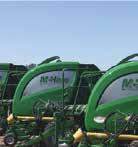

as a real strength for our organization.”
Even in the fourth-least populous county in the state, the disconnect between society and agriculture is evident he said. To help reconnect the two, the Pepin County Dairy Promotion committee has continued to nd ways to help their community and provide additional education.
“We want to be as involved
in the community as possible,” Danzinger said. “Doing more events and doing things yearround, that keeps everyone more engaged.”
The year-long approach has kept the board members active, participating in approximately 25 events each year. The goal is to provide consumers with quality dairy products and further agriculture and dairy education.
The group has put an added focus on nding ways to contribute to more community events, instead of the traditional farmer-centric events. Along with nding new events to participate in, they have also added educational information to create a more engaging dairy experience.


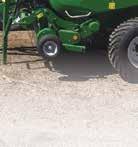






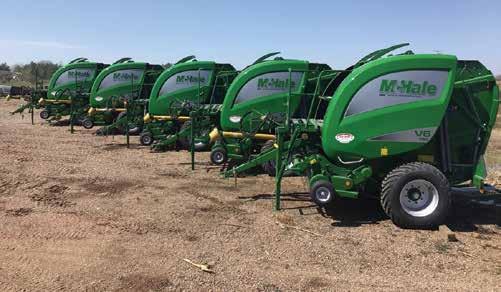








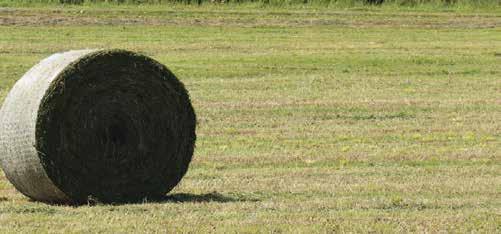



Con nued from PEPIN COUNTY | Page 32
“We tailor our efforts to who we’re working with,” Matthew Costello said. “If it’s a few gallons of milk for the church group, we’ll put some educational yers with it. If it’s for a youth group or a younger demographic, we’ll add word searches or a fun questionnaire about dairy, just adding something to the experience. We want to help the younger audience understand what dairy is, and what dairy does.”
In addition to the dairy breakfast, the events included in the year-round approach include participating in Holidazzle, and other local parades, handing out cheese sticks in lieu of candy, donating milk to the hot chocolate stand, and donating Eau Galle Cheese company cheese to the two schools in the county for National Grilled Cheese Sandwich Day.
“It’s important to us that we’re providing a quality product for people in our community,” said Randy Koller, current chairperson of the committee. “That can change the perspective of what could be a potentially bad experience into a good one because of the product.”
Providing quality experiences with quality products, as well as adapting their approach to the traditional dairy breakfast has been a focus of the group.
“We added more kids’ activities to our dairy breakfast to help keep their attention
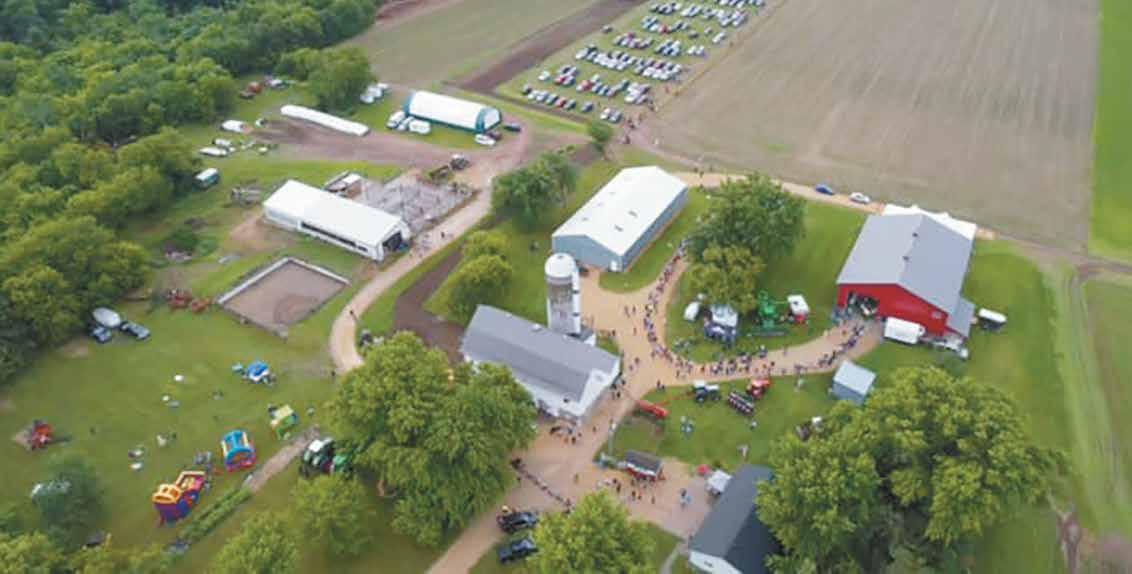
and keep people on the farm longer,” Celsey Weiss said. “We want to connect with the younger generation to make it a fun event for the kids.”
A tool the board uses to educate visitors on agriculture is the dairy breakfast scavenger hunt.
“Historically, there has always been a farm tour during the breakfasts,” Matthew Costello said. “But that’s almost become a liability issue
now. We adapted by providing multiple locations around the farm where people can walk to and there’s an educational piece. We’ll have the farm that hosts the event bring in their nutritionist, veterinarian, even manure management, to teach people about their roles. Attendees get a punch card and a prize if they hit all the stations.”
Jon Koller agreed on the importance of the scavenger hunt.
Has been a quality market for MN dairy farmers for over 100 years. MN producers provide one of the country’s most distinctive brands of cheese that is still made using the same Old World craftsmanship and has been combined with cutting-edge technology to produce cheese that delivers unforgettable taste with unparalleled quality. MN Dairy farmers and Bongards, quality that stands the test of time. We offer a competitive base price, premiums, and the best eld representatives in the industry.
13200 Co. Rd. 51
Bongards, MN 55368 (952) 466-5521
Fax (952) 466-5556
110 3rd Ave. NE
Perham, MN 56573 (218) 346-4680
Fax (218) 346-4684
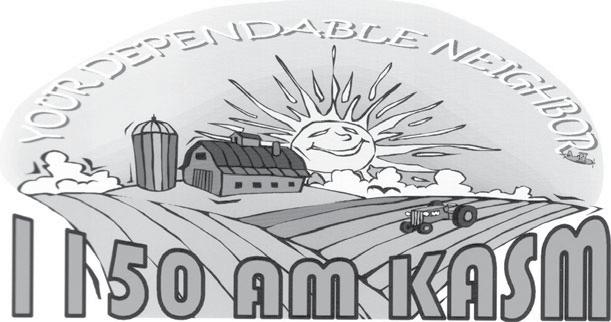
“I help pick people up from the parking lot and bring them in,” Koller said. “If they’re from out of town, I always try to pick them up when they are ready to leave. I’ve talked with people who had those conversations with nutritionists and vets, and when they come back, they’ll talk about all that they learned from it.”
The Pepin County Dairy breakfast will be held at Brun-
ner’s Hillside Dairy June 21.
“We can’t thank our community partners enough,” Randy Koller said. “We have a great relationship with our local businesses, and we couldn’t do all the events we do if it weren’t for them. We’re very fortunate to have such generous people within our community that help us put together these events and be as active as we want to be.”


Sauk Prairie ofcer team takes on FFA Day on the Hill
By Dan Wacker dan.w@dairystar.com
SAUK CITY, Wis. — FFA members can participate in a variety of activities, from judging cattle to career development events and public speaking. Members from the Sauk Prairie FFA ofcer team participated in FFA Day on the Hill last month, helping to further conversations with legislators about the work of FFA chapters and agriculture in society.
Chapter President Thea Harpold, Vice President Sophie Sonday, Treasurer Lane Albers and Reporter Logan Sorg represented Sauk Prairie as they spoke with government representatives about the importance of FFA and what they do to impact their community.




is important,” Sonday said. “Agriculture is the backbone of everything we do: the clothes we wear, food we eat, medicine we take. It all revolves around agriculture. If the legislators are looking at passing a bill, we want them to also look at how it could affect agriculture.”
Sauk Prairie FFA was one of 38 chapters from around the state that participated in the event. The experience helped build life skills, something the National FFA Organization continues to provide.
“It was a little scary talking to the representatives because of their positions,” Sorg said. “But when you start talking to them, you realize they’re just people. Talking with them and connecting was huge. We had some representatives ask how they could come to some of our events to see what we’re doing.”
Albers works part-time at Sprecher Brothers Farms LLC in Sauk City and Sorg’s grandparents previously owned a herd of dairy cows.

“Talking to legislators

Turn to FFA DAY | Page 35


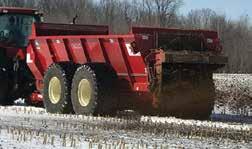


The legislators were engaged in discussion and willing to learn from the FFA ofcers. Having that experience helped build condence in the high school students.
“We can learn from this experience and realize it isn’t scary,” Sonday said. “We can leave it and know that they heard us. That’s super cool.”
The attendees said FFA Day on the Hill is an event which felt well–received by legislators who hear directly from FFA members.
“A lot of the legislators were very happy to see us,” Harpold said. “They liked seeing all the blue jackets in the capitol. They wanted to talk to us, not our advisers. That was good to hear.”
Among the topics discussed at FFA Day on the Hill were the services the chapter offers for professional development and how they helped their community. Albers spoke about what his team considered the biggest causes for concern in the agriculture industry: prices and farm closures.
They also discussed what their FFA chapter does, activities and events they host, and partnerships within the community.
Albers spoke directly about the importance of apprenticeship programs offered through agriculture education and FFA.
“Some classes you have to take don’t pertain to the job you want to be in,” Albers said. “For people to have the chance to get on-the-job experience that will help them in the future, that’s more important than taking classes that might not be as valuable.”
Mental health resources were also a focus for the group.
“I had done research for a speech for district leadership development,” Sonday said. “I learned how farmers are 3.5% more likely to struggle with mental health. We’ve seen that struggle rsthand and it’s something that isn’t talked about. I think we need to talk about it because it’s not an issue we can just put away.”
The event also provided the opportunity to discuss with legislators the FFA events which help make communities more knowledgeable on the agriculture industry. FFA has a variety of events with community involvement, including Food for America, the annual fruit sale and hosting blood drives with the American Red Cross.
One aspect that makes Sauk Prairie FFA unique is having a 40-acre test plot available for the school’s agriculture department.
“We rent the plot from the hospital and it’s been really handy,” Albers said. “We work with local dealers to get seed and plant in the spring and we get to see the results in the fall.”
FFA’s involvement within the community through educating youth helps teach and instill values in people who may not come from an agricultural background. This is something that Harpold and Sonday both relate to.
“I don’t have a background in agriculture,” Harpold said, “My parents moved to the country and I met new people and they encouraged me to join FFA. It’s a great feeling to have been elected president. People have accepted me and helped encourage me in this role.”
Sonday agreed, echoing a similar feeling of acceptance while learning about what daily life in agriculture is like.
“What I’ve learned about the dairy industry has come from my ag classes and being around people like Logan and Lane who work in agricul-


ture,” Sonday said. “I live in town and I wasn’t exposed to much production agriculture when I was younger. It’s been a real learning experience. Seeing what their experiences are and really learning from them has been enlightening.”
The representa�ves of the Sauk Prairie FFA officer team sit with Rep. Karen DeSanto for FFA Day on the Hill Feb. 17 in Madison, Wisconsin. The officer team spoke with state representa�ves about what FFA can offer them and what the chapter does in the community.


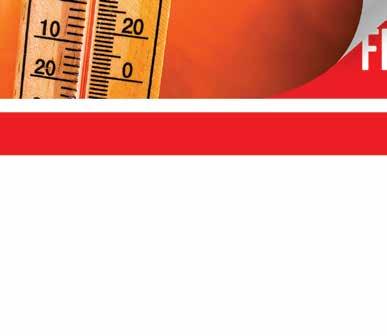
pre-hydration












































The sound of weeping and gnashing of teeth can be heard throughout the land at this time of year, and not just because it’s National Poetry Month, mandating by federal law that we have to memorize a new poem every day.
Another cause for our collective discomfort is that the middle of April is when income tax returns are due. “Forcibly extracted without Novocain” would describe how some feel about this event.
For many, the acronym “IRS” brings to mind an encounter with a schoolyard bully. Grasping your forearm, the bully uses brute force to make you smack yourself.
during audits, he would pistol-whip taxpayers to extract interest and penalties. This was not the case. He would read aloud from the tax code until the auditee exclaimed, “OK, I’ll pay. Just make it stop.”
Dear County Agent Guy
Dale had a razor sense of humor, albeit one that was accountant-centric.



By Jerry Nelson Columnist
One year, for Christmas, he gave me a spent rie cartridge that had been soldered onto a trio of pennies. “It’s a Norwegian quarter,” he said, grinning. Seeing that I still didn’t get it, he explained, “Twenty-two plus three equals 25. That makes it a quarter.”
I noticed the desk in Dale’s home ofce sported a miniature umbrella mounted on a small block of wood. The wood beneath the umbrella was studded with little nails.


Fre-Heaters










“What’s the matter?” he asks as you involuntarily self-administer dope slaps. “Why are you hitting yourself? Gimme your lunch money.”
At least, that’s how I felt about the IRS until I became acquainted with one of its agents, the man who would eventually become my fatherin-law.
It was an ambush. One evening after nishing chores on my little dairy farm, I drove into town to call upon a particular young lady with whom I had been spending a good deal of time. A large American-made car was parked outside her house. This was troubling; it was obviously a guy’s car.
I sat in my pickup and mulled things over. It was clear that she had a gentleman visitor. Should I cut and run? Or should I stride inside and ght — metaphorically, not physically, as I faint at the thought of sticuffs — for my gal?
I took a deep breath and knocked on her door. My girlfriend opened it, smiled, and said, “Come on in. This is my father, Dale. He works for the IRS.”
Dale xed me with a stern look as we shook hands. For some reason, I suddenly felt extremely guilty.
Digging in my pocket, I said, “I’ve got $7.87 on me. Would that be enough to keep me out of jail for the rest of today?”
Dale assured me he wasn’t there on ofcial business; he was merely visiting his daughter. What a relief — although I then had to explain why I was at his daughter’s house at that time of night.
As I got to know Dale better, I came to realize he was just a really nice guy who happened to work for one of the government’s most misunderstood bureaucracies. He dispelled some of the notions I had about the IRS.
For instance, I had assumed that,
Puzzled, I asked Dale about its purpose.
“That’s my tacks shelter,” he deadpanned.
Some years later, my wife and I received one of those dreaded missives from the IRS. The letter essentially said, “Dear Taxpayer: We have ascertained you owe us one jillion dollars in unpaid taxes, plus interest and penalties. Please remit the full amount immediately, or else. P.S.: We shouldn’t have to explain what we mean by ‘or else.’”
How could this be? Our dairy farm didn’t even gross that amount. Was this a mistake, or had we simply failed to grasp the incomprehensible intricacies of our tax system?
We gave the letter to Dale, who read it and muttered, “Those blockheads!” He dashed off a letter to the IRS that said, “You blockheads. These people do NOT owe this money. You need to immediately delete these taxes, interest and penalties.”
He didn’t use those exact words, but that was the gist of it. He put it in bureaucratese so the IRS would realize they were dealing with someone “in the know.” Dale also wrote his agent number beneath his signature, which probably helped. He was such a senior government employee by then that he probably had access to the nuclear launch codes.
Dale’s letter did the trick. We soon got a reply from the IRS that essentially said, “Oops. Our bad.”
So, try not to get too uptight at tax time; everything will probably work out just ne. Besides, April is National Stress Awareness Month.
Jerry Nelson is a recovering dairy farmer from Volga, South Dakota. He and his wife, Julie, have two sons and live on the farm where Jerry’s great-grandfather homesteaded over 110 years ago. Feel free to email him at jerry.n@dairystar.com.





Residues. What do you think about when you hear this word? Residue prevention, antibiotics, farms, veterinarians, meat, milk, food — all are applicable. All domestic and imported food products are tested for residues through the National Residue Program, which is administered by the U.S. Department of Agriculture Food Safety and Inspection Service. Meat, poultry, egg products and sh products are required to meet specific standards established by the Food and Drug Administration and the Environmental Protection Agency. These standards ensure that food products comply with U.S. requirements for veterinary drug, pesticide and chemical contaminants.
ing carcasses and parts of animals found to have violative residues.
Additionally, the positive residue results are published for public review in the FSIS annual sampling report each year. The names of violators with two or more violations in 12 months are posted on a USDA repeat violators list that can be used as a reference by meat processors and livestock markets to determine if purchased animals are at high risk for residues.
have labels for dairy cows and were likely the result of incorrect dosage, administration or not waiting long enough before selling to slaughter.

By Megan Weisenbeck Veterinary Wisdom Veterinary Wisdom
Based on a semi-recent experience with residues at slaughter, I would like to share some applicable information that I learned.
First, carcasses are checked on the oor with a preliminary test. This can be random surveillance or inspector-generated. Surveillance sampling is scheduled testing performed on random carcasses after they have passed antemortem inspection. Inspector-generated sampling is conducted when FSIS inspectors suspect animals have potentially violative residues. This may be based on a producer’s history of violative residues, the individual animals exhibiting signs of systemic disease or the animals that have injection site lesions.
When an animal carcass is tested, the public health veterinarian uses a KIS, or kidney inhibition swab test. This test is positive or negative but does not specify which drug the animal is positive for. The carcass is retained until results are returned. Further samples are collected if an animal tests positive on the preliminary test to determine the type of drug and the level present. Occasionally, carcasses are retained even if KIS is negative if other chemical residues are suspected. The public health veterinarian is responsible for condemn-
Where do the withdrawal times come from? The FDA establishes the period after drug treatment when milk and eggs are not to be used for food and during which animals are not to be slaughtered. This allows the animals time to eliminate the drug residues. However, there are times these withdrawals might be inadequate depending on the severity of the animal’s condition. To make this more confusing, some products approved for use have a tolerance level. If the animal tests below the level, it is OK for human consumption, but some products have a zero-tolerance level if they are not approved for the class of animals. Such an example would be Nuor (orfenicol). While it has an approved label for calves and beef cows, it does not have an approved label for dairy cattle over the age of 20 months. This means there is a zero tolerance for levels of orfenicol in milk and slaughtered dairy cows (lactating or dry).
How do you know which withdrawal to use? Product labels are required to have withdrawal labels when marketed. Additionally, if a veterinarian has prescribed a product in a way that does not match the published label, the veterinarian should label the product with new directions, the appropriate withdrawals, and provide written treatment protocols with clear directions as well. Another helpful resource is the Food Animal Residue Avoidance Databank, called FARAD. FARAD is a directory of residue avoidance information and has an excellent website where questions can be asked for specic withdrawals.
What are the most common causes of residues? Dairy cows, beef cows and bob veal made up the bulk of violative residues in 2023 (2024 is not published yet). The chemical residues varied, but ampicillin, desfuroylceftiofur (ceftiofur), unixin, penicillin and sulfadimethoxine were most frequent. These products

Several more chemical residues in dairy cows also caught my eye. Some dairy cows tested positive for gentamycin sulfate, doxycycline and dihydrostreptomycin. Quite frankly, these drugs have no business being used in cattle at all: beef, dairy or other. They have no label or evidence to support their use and no appropriate withdrawal period to follow.
Consider the following when reviewing residue risk on your own farm. Do the following items occur?
— Treated cows are not recorded or identied, which results in treated cows being milked into the bulk tank or being sold for slaughter.
— Dry cow tube withdrawals are not observed. Make sure to follow all withdrawal periods for both milk and slaughter, especially if the cow calves early.
— Drugs are used illegally or incorrectly. An example is using Nuor in a dairy cow or giving Excede in the tailhead or in the neck instead of the proper base of ear location.
— Cows are treated for extended periods, but the withdrawals are not extended to compensate. If you extend treatment even by accident, extend your withdrawal. Ask your veterinarian or use FARAD to help determine an appropriate holding time.
— Remember, withdrawal periods are established using studies from healthy cows. The reason being that the physiology of a healthy cow is more consistent and better understood. Therefore, sick cows may require extended withdrawals due to dehydration and impaired kidney and liver metabolism.
— Perhaps another question should be considered: Is it worth treating the cow? Does she have a chance of recovery with treatment, or is she better off being destined for slaughter or euthanasia? Dry cow treatment could be included in this as well. Can your farm manage the residue risk associated with dry cow antibiotics?
Megan Weisenbeck is one of six veterinarians at Northern Valley Livestock Services in Plainview, Minnesota. She practices primarily dairy production medicine in Minnesota and Wisconsin. Megan can be reached at meganweisenbeck.dvm@gmail.com.







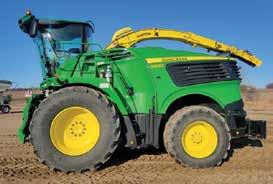





100 CH hrs., #550293 ........... $575,900
JD 9500 2023, Kernel Processor, PRWD, 367 hrs., 210 CH hrs., #586492 ........... $539,900
JD 9600 2022, Kernel Processor, PRWD, 885 hrs., 618 CH hrs., #593717 ........... $459,900 JD 9700 2021, Kernel Processor, PRWD, 1147 hrs., 730 CH hrs., #593716 ......... $379,900 JD 9700 2020, Kernel Processor, PRWD, 981 hrs., 575 CH hrs., #552460 ........... $399,900
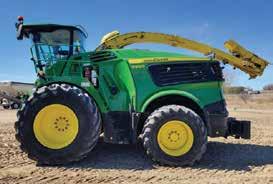




9800 2021, Kernel Processor, PRWD, 1211 hrs., 755 CH hrs., #586125 .........
9800 2020, Kernel Processor, PRWD, 1627 hrs., 1043 CH hrs., #593718 ....... $369,900 JD 9800 2020, Kernel Processor, PRWD, 2108 hrs., 1350 CH hrs., #585962 ....... $329,500 JD 9800 2019, Kernel Processor, PRWD, 1589 hrs., 1200 CH hrs., #585961 ....... $334,900 JD 9900 2021, Kernel Processor, PRWD, 1222 hrs., 770 CH hrs., #565397 ......... $509,900
JD 9900 2021, Kernel Processor, PRWD, 2041 hrs., 1518 CH hrs., #585650 ....... $319,900
I hadn’t bought a tube of ChapStick in so long that I couldn’t remember what decade I last used the product. That was before last week, when I made an emergency stop at Kwik Trip and had to ask the nice lady at the cash register where I could locate some. I bought Carmex as I remembered it tasted rather awful but was pretty great at healing cracked lips. I remembered correctly, as my lips are well on their way to being able to smile again without bleeding.
By now, you’re probably wondering how I came to need some ChapStick after decades of not using any.
A month or two ago, a friend of mine asked if I’d like to climb Mount Whitney with him. I had mentioned to him a couple of times that, if he was heading out to the mountains, he should let me know, and I might be able to sneak away from the farm for a few days and join him. It turned out our
employees were available for extra shifts. The only extra activity going on when he was available to go on a trip was the second week of performances of a play our daughter, Hannah, was in. Her brothers were going to be around as well as grandparents to run her to her play performances, so I had no excuses not to join him. I cashed in some Delta rewards miles on an overpriced spring break time ticket to Las Vegas and told my friend Sam we were on for a mountaineering trip.
Like the way I feel before the rst crop of hay of the season, I was making lists and checking them twice for things needed to successfully accomplish the goal: The right layers of clothes to be comfortable in temperatures anywhere from -20 wind chill to 65 degrees and sunny, climbing and safety gear like avalanche rescue gear, a rope, a harness and carabiners were needed. I had to buy an avalanche beacon, which can help someone locate me if I’m



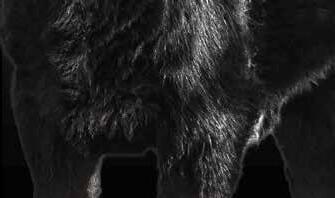
buried and vice versa.
Maybe most important for a good time while on a backpacking and climbing excursion were food and snacks, preferably very lightweight meals but heavy in calories and avor. Thankfully, Emily doesn’t just enjoy cooking excellent meals for our family when we are home. She also has been experimenting with making dehydrated meals for our hiking trips for years and has come up with some stellar recipes. I seemingly had everything ready that I could possibly need within reason of what ts in a pack and could be hiked up a mountain.
The weather and avalanche forecasts for that week looked great.

By Tim Zweber Farmer & Columnist
Emily dropped me off at 4 a.m. at the Minneapolis-Saint Paul International Airport and we were on our way; well, after the pilots spent an hour starting one of the jet’s engines, we got on our way. Four hours of driving from Las Vegas to Lone Pine, California, and we were ready to get our packs on and go.
We camped by the trailhead the rst night to get used to higher altitudes and avoid having to nd our way up the mountain a couple of miles in the dark. The second day, we hiked up above 11,000 feet and camped by an alpine lake surrounded by beautiful cliffs with a view down valley toward the sunrise and up valley at the peak of Mount Whitney. On the third day, we grabbed our ice axes, put on our crampons and hiked/climbed our way to the 14,500-foot summit, then back down to camp, thankfully not slipping and falling off any cliffs. Because the weather was beautiful blue skies, and the sun at high altitudes is more of a burning death orb than a warming friend, we applied lots of sunscreen each morning. Unfortunately, I did not apply any to my lips and not enough to my nose. I thoroughly burned both.
The adventure was a great success. I haven’t been smiling much outwardly because it hurts, but inside, I’ve been grinning from ear to ear. Until next time, keep living the dream and remember that, no matter how well you plan, some little thing will probably be forgotten, and that’s OK. It’s often painful but acceptable. Getting out there and doing something, even if you may not have every detail perfect, is worth it.
Tim Zweber farms with his wife, Emily, their three children and his parents, Jon and Lisa, near Elko, Minnesota.












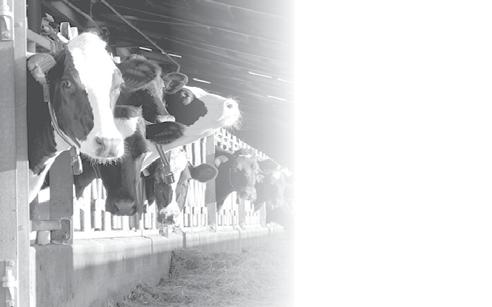

It’s that time of year again. Time for suspense and the thrill of erce competition. Time for teams to join together in the ultimate competition of knowledge, skill and teamwork. We look forward to this season that captures the passion and commitment of players, coaches and fans alike. What we are referring to is not the March Madness you are probably thinking of, but rather the bracket challenge thousands of 4-H kids partake in every





By Megan Schrupp & Ellen Stenger Columnists
spring — dairy quiz bowl.
4-H dairy quiz bowl is a knowledge-based competition on all things dairy. Teams of four members compete face-to-face, answering questions posed by a moderator. Topics include reproduction, nutrition, judging, milk quality, dairy products, health and more. Teams receive points for correct answers and may lose points for incorrect answers. After an initial round of questions posed to each individual team member, questions are offered up for grabs with teams using buzzers and nerves of steel to battle skills of knowledge and speed. The team with the highest nal score is the winner.
This year, our entire family has been immersed in the fun, with Ellen’s oldest participating on Meeker County’s junior division team. As a family, we have been spending time helping Adeline learn all things dairy. Megan explained reproduction, health and common diseases. Ellen reviewed parts of the cow, the unied scorecard and dairy history. Even Papa joined in the fun, as he covered topics such as acid detergent ber, fat-soluble vitamins, dietary cation-anion difference diets and all things nutrition.
Through this process, our family was reminded of the massive amount of research and information that has elevated our industry to what it is today. We have rediscovered facts forgotten long ago and learned a few new things along the way. One of the most reward-

ing aspects of working with youth to prepare for the quiz bowl contests are the moments when youth can suddenly witness concepts learned in practice, rsthand on the dairy. Watching the excitement and understanding “click” on the face of a youth as they help with milk fever and really understand the physiological process of what is occurring is priceless. Or when junior members witness a cow jumping on another cow and suddenly realize why that is happening and what that means to the dairy producer. There are so many simple things we witness each day as we move along; having youth learn the knowledge and begin to understand and ask questions reminds us why we decided on this career in the rst place. Older youth participants in the quiz bowl contests who may work on a dairy come to understand why they are completing the tasks assigned to them in a particular way. That understanding changes their mentality from one of just working to get the job done to one of working with curiosity, interest and observation.
Dairy quiz bowl provides youth with a nidus for greater learning and excitement about possible future career choices in our beloved dairy industry. The immense amount of knowledge and areas of expertise that are required in our current industry are extremely difcult to explain to youth when considering future career choices, especially if they are not raised on a dairy farm. Therefore, participation in these events gives them a further understanding of the wealth of information and data that drives our dairies and allows them to explore various areas of the industry. They are further able to discover areas that they may have a particular interest in — many times steering them in their future endeavors.
At the time of publication, the season will be drawing to a close as the nal coaches and teams are gunning for championships. We strongly encourage youth or families currently who are not participating but are interested in the quest for knowledge — and fun — of all things dairy to keep their eyes open at the end of this year when enrollment opens for the subsequent season. Contact your local 4-H county ofce for more information on getting in on the March Madness.
Megan Schrupp and Ellen Stenger are sisters and co-owners of both NexGen Dairy and NexGen Market in Eden Valley, Minnesota. They can be reached at Nexgendairy@gmail.com.
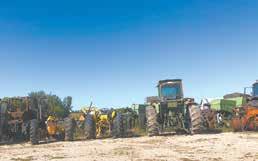


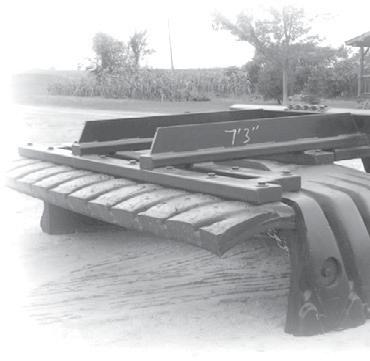

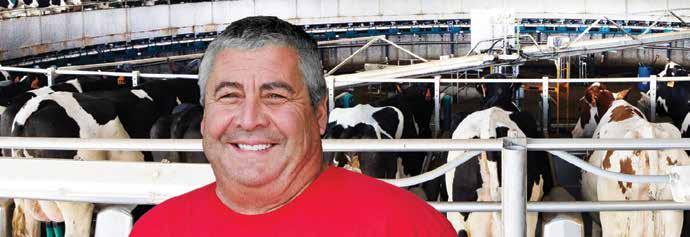
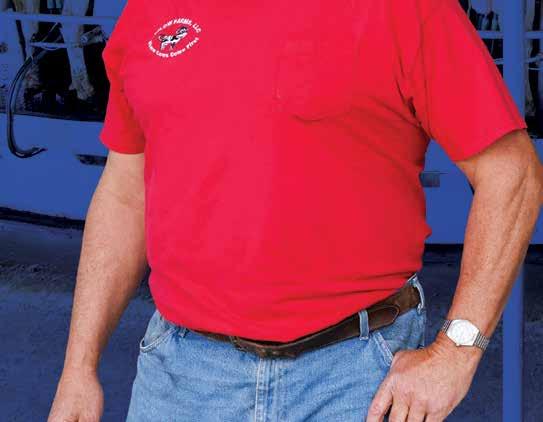



VINCENT BILOW, Bilow Farms LLC 100-stall GEA DairyRotor T8900 parlor Malone, New York


“What excites me most about the GEA DairyRotor is the calmness of the cows. They load magnificently on and off the platform and we’re getting wicked milk letdowns. Our cows are happy and so is our team.” Bilow Farms LLC puts their cows and labor force first with


